Unlocked TA burglarized
Safety and Security notified the Vassar community of a burglary at a Terrace Apartment (TA) after the theft of a bike on Feb 8. The report sent out by Safety and Security on Thursday, Feb. 9, alleges that the unknown person entered through an unlocked door and took a teal-colored Nishiki women’s mountain bike. This most recent break-in raises questions about campus security and what the College, and its students, can do to prevent further incidents.
The Office of Campus Safety reported in a written statement that the break-in at the TA was the first burglary of the 202223 school year, with the last on-campus larceny reported in March 2022. Director of Campus Safety Arlene Sabo, in a written correspondence, said, “If you look at the annual (per calendar year) burglary statistics over the past few years, the statistics range from a low of 1 in 2022 to a high of 10 in 2020.”
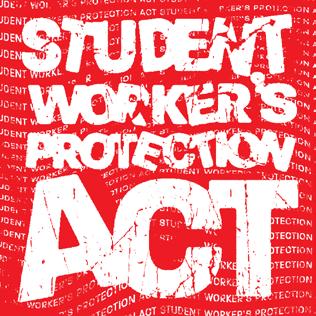
A Vassar Student Association (VSA) survey from the beginning of the 2022-23 school year showed that 72 percent of current and former apartment residents feel Vassar’s response to crime in apartment
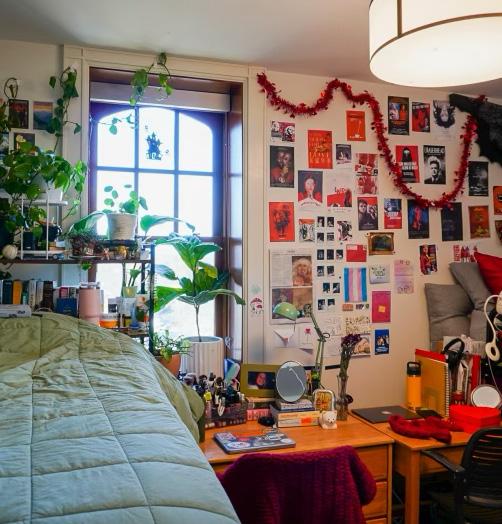
See Burglary on page 4
Indoor track and field added
Theaddition of an indoor track and field season during the winter months has been a major goal since Vassar sponsored outdoor track and field as a varsity sport in 2008.
This winter, that goal finally became a reality. The Brewers’ track and field team no longer has to wait until the spring to compete as a whole team.
Prior to this, only distance runners would be able to compete in the fall as a part of the cross country team. Sprinters and field event competitors would have to wait almost the entire academic year to begin competition in the Spring.
Now, the addition of an indoor season has allowed the entire team to begin competition in December.
“Through extremely hard work from many people involved, we were able to add an indoor program. It's an important addition because it certainly helps with recruiting and training,” Head Coach Joe Reed told The Miscellany News via email correspondence.
The addition was certainly long overdue.
See Track on page 15
Beloved professor reflects on career
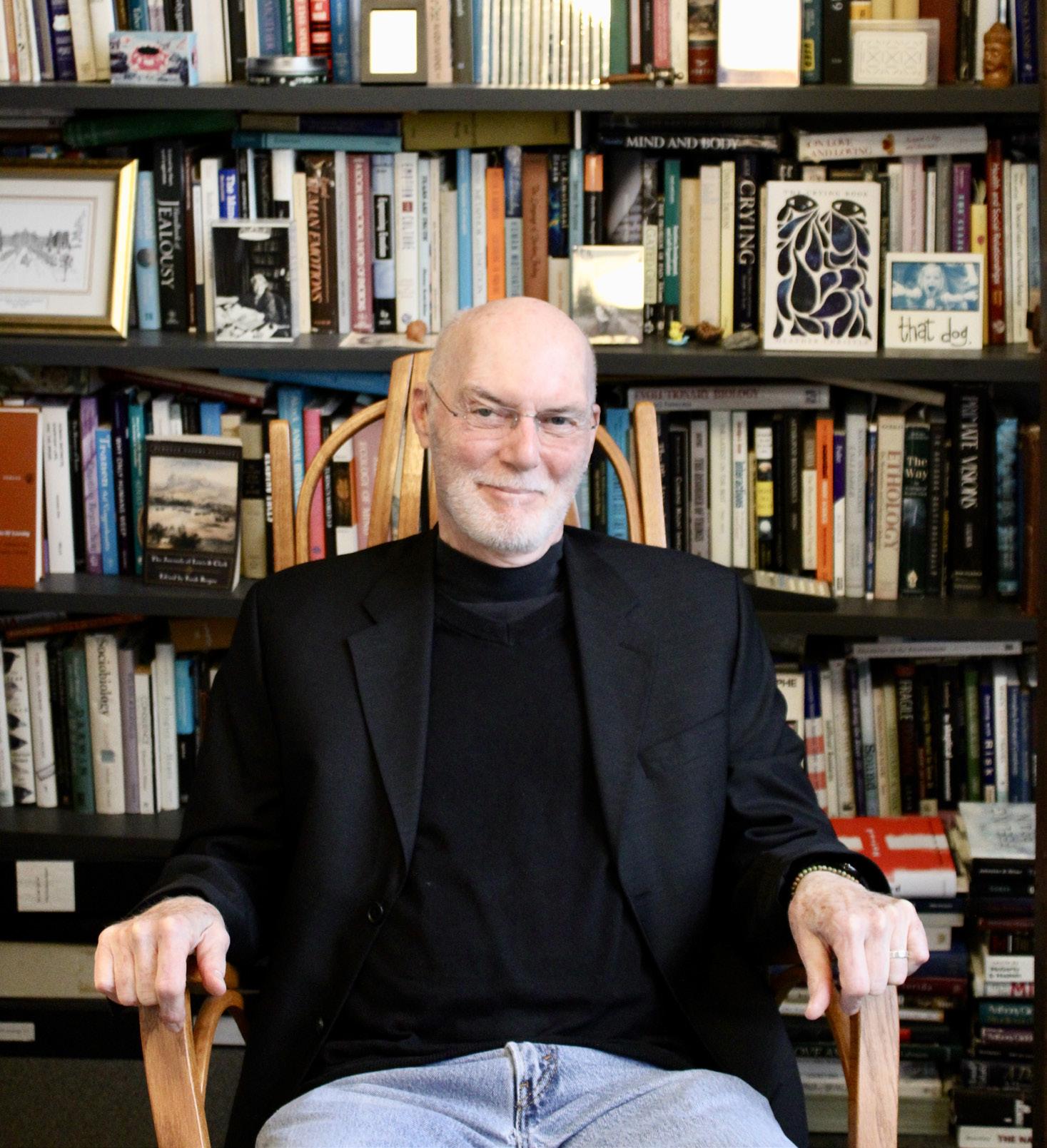 Maryam Bacchus Design Editor
Maryam Bacchus Design Editor
Tucked away on the second floor of New England is the vibrant office home, to Professor of Psychology, Randolph Cornelius, affectionately known as Randy. I first met Cornelius last spring when taking his Individual Differences in Personality (PYSC253) course. During our class lectures, he would often include personal anecdotes as examples of psychological concepts. His eccentric stories captivated my attention, and the class quickly became one of my favorites. Through his lectures, and later working in his lab, I got to know more about Cornelius. When he confirmed that he would be retiring at the end of this semester, I wanted to celebrate his long-standing dedication to Vassar. Cornelius earned a Bachelor of Arts from the University of Florida in 1975. An avid reader, he started his undergraduate career interested in journalism and later moved to studying psychology to expand on an interest in the validity of Freud's work. Cornelius explained that the young women who were the voluntary subjects of Freud’s early work had been sexually assaulted by family members, and thus the conclusions he drew about them wanting to sleep with their parents could have been misled. He disliked Introductory Psychology but later took an interest in Personality Psychology. Cornelius was encouraged
News.
See Professor on page 8
Announcing dorm decor contest winners
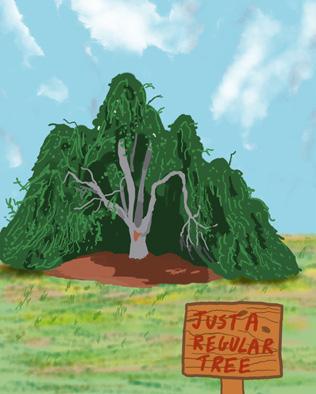
 Madi Donat Humor Editor
Madi Donat Humor Editor
Theresults of The Miscellany News’ dorm room decor contest are in! Thanks to the work of many student decorators, artists and photographers, we were able to see the finest of Vassar’s residential spaces. Below are pictures and descriptions of our winner and two runners-up. Members of The Miscellany News' Editorial Board served as judges for this competition, and would like to extend a big thank you to all who submitted photos. Without further ado, let’s get to our first-place winners, who will be receiving a $100 gift card to Twisted Soul!
First place: Gus Pointer Mace ’26 and Catherine Phillips ’26, Jewett
This cozy, color-blocked Jewett double won my heart! We were impressed by the consistent theming, and the cute stuffed animals didn’t hinder its placement either. I loved the eclectic posters, art and plants throughout the room. I especially admired the green/pink color split—a fantastic combination. The lights also brought a homey feel to this quaint double and showcased how these two made the most of their limited space. The more muted nature aesthetic of the last image was the cherry on top. Amazing work, you two!
See Dorms on page 7
February
THE MISCELLANY NEWS
EDITOR-IN-CHIEF
MANAGING EDITOR
CONTRIBUTING EDITOR
NEWS EDITORS
ARTS EDITOR
FEATURES EDITOR
ASSISTANT FEATURES EDITORS
OPINIONS EDITOR
HUMOR EDITORS
ASSISTANT HUMOR EDITOR
SPORTS EDITOR
ASSISTANT SPORTS EDITOR
SOCIAL MEDIA EDITOR
PHOTO EDITOR
DESIGN EDITOR
COPY EDITOR
ASSISTANT COPY EDITORS
GRAPHICS EDITORS
LIVE EVENTS CHAIR
VIDEO PRODUCTION MANAGER

WEBMASTERS
BUSINESS MANAGER REPORTERS, COLUMNISTS
Nina Ajemian
Monika Sweeney
Leila Raines
Jacques Abou-Rizk
Charlotte Robertson
Ganesh Pillai
Kai Speirs
Carina Cole
Luke Jenkins
Sufana Noorwez
Madi Donat
Nicholas Tillinghast
Nandini Likki
Doug Cobb
Nick Villamil
Tracy Cen
Igor Martiniouk
Maryam Bacchus
Caris Lee
Emma Goss
Tiffany Kuo
Julia Weinberg
Sandro Lorenzo
Karen Mogami
Catherine Borthwick
Ian Herz
Rohan Dutta
Chloe Gjoka
Phoebe DiLeo
Emma Adams
Brittany Andrade
Carly D’Antonio
Yaksha Gummadapu
Allen Hale
Jesse Koblin
Anna Kozloski
Richard Lu
Gwen Ma
Jyotsna Naidu
Sam Patz
Emma Raff
Naima Saini
Anna Terry
COPY STAFF
Kathryn Carvel
Willa Jewitt
Allison Lowe
Ailynn O'Neill
Emma San Filippo
Meera Shroff
Edward Welch Morgan
GRAPHIC ARTIST
CORRECTION POLICY
The Miscellany News will only accept corrections for any misquotes, misrepresentations or factual errors for an article within the semester it is printed.
The Miscellany News is not responsible for the views presented within its Opinions pages. Staff editorials are the only articles that reflect the opinion of a two-thirds majority of the Editorial Board.
Koa Beck speaks to Vassar about white feminism

Last Thursday, Feb. 16, acclaimed author, journalist and cultural critic Koa Beck flew across the country to speak before the Vassar community in a presentation sponsored by the Women, Feminist and Queer Studies (WFQS) Program. Beck’s talk, entitled “Unpacking White Feminism: The Knotted History of Racism within Women's Movements and Feminist Culture, Past and Present,” defined “white feminism” as a specific approach to gender equality that has become the default of the Women’s Rights Movement. This ideology can be advocated by anyone and stems from labor exploitation, imperialism, capitalism and white supremacy.
The event began with a brief introduction by Professor and Director of the WFQS program Paulina Bren, followed by an overview of Beck’s professional history. Early in her career, Beck channeled her interest in gender identity, race and culture into her work as a renowned journalist, covering prominent movements including The Women’s March, #MeToo and BLM. She eventually worked her way up to Editor-in-Chief of Jezebel, Executive Editor of Vogue and Senior Editor of Marie Claire— all of which led to her book, “White Feminism: From the Suffragettes to Influencers and Who They Leave Behind.”
Addressing the audience, Beck stated that “White Feminism” granted her the freedom to write honestly and without censorship in a way that her job as a reporter never allowed. In many ways, Beck’s journalistic career was persistently frustrating, and this aggravation was not only induced by insensitive colleagues and misogynistic interviewees but also grounded in a long and complex history of white feminist practices. “I started to realize in these newsrooms that when I said the word ‘feminist,’
it was very different from when a lot of other feminist-identifying women whom I worked with said the word, ‘feminist,’” she explained.
Many students who attended the event, whether it was to earn extra credit in their WFQS class or simply to learn more about feminism, left the talk with a whole new understanding of the women’s movement. Elsie McKendry ’26 wrote, “I realized that so much of the ‘feminism’ I consume/support isn’t actually working towards the change I want to see. Instead of working to dismantle the systems of oppression that constrain women and other marginalized communities, women seek to gain power on the terms of the oppressor… Moving away from white feminism and towards equality for all is the only way to truly be feminist.”
According to Beck, the suffragists of first-wave feminism—all of whom were white and upper-middle-class—modeled their conception of gender equality after their cis-white husbands, sons and fathers, promoting a feminist ideology that aspires to whiteness. Partly because of this, modern white feminism exports a very specific skill set intended to navigate the patriarchy instead of challenging the structural
powers behind it and aligning with disenfranchised genders’ most basic needs. In an interview conducted after the event, first-year Priya Merchant said, “I resonated with Koa Beck's talk because I felt she was directly addressing me. As a white liberal arts undergraduate, she gave me practical ways to push intersectional feminism within a capitalist structure.”
“You are incentivized to overcome the patriarchy through business, through education, through very individualized ascension,” explained Beck. “You are asked to think beyond your circumstances and your immediate reality to participate and be seen in white feminism.” A working-class mother is useless in the eyes of an ideology that puts the wealthy, conventionally attractive businesswoman on such a high pedestal. And, according to Beck, when a woman or non-binary person does miraculously achieve a higher status, they become the feminist standard that all marginalized genders must aspire to imitate. “The white feminist response to that is ‘How do we all be like her?’”
Of course, the feminist movement is also comprised of groups, initiatives and programs that oppose white feminist prac-
tices, many of which are created and run by minorities. These organizations continuously fight against systems of power, refusing to profit off of feminist thought and ensuring that everyone has access to resources. “What I'd like for Vassar students to take away from my talk is that white feminism is not the only feminism and never has been,” said Beck in an email correspondence with The Miscellany News “There are feminisms, plural, and there is so much to learn from gender-conscious movements that have not relied on white feminist strategies or goals in envisioning gender equality.”
To close her presentation, Beck gave her audience a list of ways to counter white feminism in their own lives. First, by rooting feminism in basic need, we increase outreach to marginalized people who do not see gender equality as a hefty paycheck and a large penthouse office. Next, we must orient ourselves against systems instead of individuals, or, in other words, understand that every sexual predator and workplace harasser is the result of institutionalized structures. Finally, we need to support and work with public institutions such as libraries, parks and public schools—places that a greater number of disenfranchised groups can access. As McKendry stated, “White feminism is everywhere. From mugs and tote bags plastered with feminist slogans to the use of the word ‘girl boss.’ Being a historically women’s college, many Vassar students adhere to this ideology, even if unintentionally.” She continued, “Koa Beck was able to permeate the illusion that white feminism is progress and hopefully make a change in the way Vassar students fight for women’s rights.”
Beck’s complete analysis of white feminism can be found in her book which is available in the Vassar Library, including a special note from the author herself.
Student Workers Protections Act initiates financial reform

OnSunday, Feb. 12, the Vassar Student Association (VSA) passed the new Student Workers Protections Act, which aims to revise the wage allotment cap put into place by the College. The current policy as it stands states that students may not earn over $3,000 with a work-study job; upon reaching the cap, students must cease working. “The fear of this practice causes many student workers to purposefully work for less money than what they are allotted, a large problem for all low-income students,” Resolution No. 26 summarizes. The College has agreed to the demands of the Protections Act, and it is expected to be implemented in the Fall 2023 semester.
According to Charlie From ’25, a VSA senator and founding member of the Working Students Coalition (WSC), only 28 percent of students receiving financial aid reached their $3,000 by the end of the school year, as found in a 2022 student employment survey. “These are facts that fly in the face of the College’s promise of meeting 100% of [a] student’s financial need and show that the system as it functions fails to accomplish its stated purpose,” they wrote in an email correspondence. They added that many students will work for lower wages out of fear of being fired, as the 2022 Student Employment Handbook states: “Student employees are classified as “at will” employees and may be terminated at any time without cause.”
The Protections Act proposes that once
student workers reach their allotment cap, the respective department they are working under will be responsible for funding excess wages. Of course, this poses an imbalance—depending on the budget of individual departments, some student workers will be able to work hours outside the original allotment, while others will not. “This is by no means a fix-all solution,” From wrote. They continued: “A band-aid for a bullet wound might not be the best analogy, because a person with a bullet wound is assumed to be healthy before the bullet. A better analogy might be a ‘band-aid for a bullet wound on a person debilitated from the beginning’...since the system has never worked for low-income students.”
The end goal, From explained, would be to fully separate work-study from financial aid: “Low-income students should not have to work an additional 8-10 hours as part of their financial aid package,” they emphasized. “This structure creates inequities of time between the work-study and nonwork-study populations.”
Lydia Freedman ’25, another VSA senator and member of the WSC, agrees that a divorce between financial aid and work study is necessary. Of the currently standing labor policy, she wrote in a correspondence, “One of the main things I found unfair was that non work study students could make up to 3k (think VSA exec board and stufels) while some Vassar allotments were under 3k, which means they needed that money more than non work study students.” She
mentioned that last year she was hired very late in the semester, and was subsequently only able to make about a quarter of her allotment. “The late hire was frustrating, I didn’t get a lot of hours based on my actual position, and I didn’t really know how to navigate my position,” she explained. In a system where financial aid packages are intertwined with work-study positions, she argued, low-income students are hurt. “I’d like to see a guarantee for students who have work study in their financial aid package get jobs quickly and get on the right path for making the money Vassar said they would get.”
But while the Protections Act may not be a “fix-all solution,” it is a landmark moment signifying cooperation between student-workers and the administration.
Vice President for Technology and Human Resources Carlos García expressed his gratitude for the VSA’s engagement with the administration: “We are confident that transparent collaboration is the fastest and most effective way to meaningfully strengthen student employment.” He continued to explain that the College aims to cultivate an employment program that is both competitive and supportive for student and departmental needs. Recently, the administration adopted a cross-functional Student Employment Advisory Group: “We invited participants, including students, last week,” he wrote. “We expect the discussions to help secure buy-in for implementing changes that may not have the
same implications for diverse parties across campus (including students, faculty, staff, and administrators).”
From remains optimistic in future endeavors, considering the act as a motion towards financial aid reform. “One small benefit with the policy…is that individual departments will be responsible for lay-offs when they occur instead of a vague Student Employment body termination,” they wrote.
From further noted that the College was originally designed to educate upper-class white students, and this legacy trickles into present-day. “When we frame the system like that, the long-term solutions that do working students justice are ones in which they have power in their employment structure,” they wrote. Ultimately, the purpose of financial aid reform is to reinstate agency to low-income students; the Protections Act is a stepping-stone in that direction.
Burglary at Terrace Apartment raises security concerns
spaces, specifically the increase of security patrols, has been insufficient in improving campus security. In the same VSA survey, 67.6 percent of students reported that they do not feel these measures will adequately improve safety on campus. VSA president Julián Aguilar ’23 confirmed that the VSA and Campus Sawwfety are working together to create a plan to improve campus security, specifically concerning apartment spaces: “This data, in addition to this most recent troubling incident, guides our efforts and determination to produce collaborative and effective approaches to properly address apartment area safety.”
Some apartment residents cite carrying physical keys as a deterrent to locking their doors. Town House (TH) resident MC Cicenia ’23 said in a written statement, “I think the reason people don’t lock doors at the THs and TAs is because it’s not super convenient to carry keys around with you everywhere or to lock doors every time you’re home.” Cicenia added, “I know at least three people who have had houses or cars broken into in the past year or so, which makes me feel unsafe even when we do lock doors.”
Sabo also detailed past security initiatives: “Over the years, the campus has expanded card access, made lighting improvements and increased camera cover-
age of the outer perimeters of the various sections of campus (i.e., main campus, the TAs, entrance roads).”
Exactly what new safety implementations will be made remains to be seen. According to the Chair of Residential Affairs Max Bergman ’25, the VSA has discussed the possibility of installing automatic locks with card readers in all apartment spaces. These locks only require a student’s Vassar ID card to unlock the door and automatically lock upon closing. This system allows for entry through the use of either a physical key or a resident’s Vassar ID card.
TA resident Lola Perez-Fry ’23 expressed support for the idea by saying, “It will help make things feel more secure.”
While the effectiveness of potential card reader installations in apartment spaces is still unknown, automatic locking and card reader systems were installed in all of the newly renovated dorm rooms on the fifth floor of Main Building. The new lock implementation in Main has been far from seamless. The Residential Operations Center (ROC) reports that at least six out of 20 of fifth-floor center rooms do not have operational card readers. Resident of fifthfloor Main Matthew Graham ’25 said in an in- person interview that his card reader hasn’t worked since the start of the school year. Regardless, Graham expressed support for the installation in apartment spac-
es by saying, “It makes less sense for dorms to have card readers since it’s inconvenient when the door locks automatically, but it would be more beneficial for apartment spaces.” During the VSA Senate meeting on Feb. 12, Aguilar added that each reader costs upwards of $3000.
For now, TA residents should plan to lock their doors whenever possible. “Individual actions, like ensuring your apartment is properly locked regardless if you're home or not, are definitely helpful and important,” said Aguilar.
Sabo echoed this statement by saying, “This is basic but it bears repeating, please help us reduce opportunity for burglaries and larcenies by locking up securely all
doors, both when home and away, and all entry level windows.” Additionally, the Campus Safety Office recommends securing valuable items, notifying Campus Security of any unlocked areas that should be secured, calling the CRC before admitting an unknown individual and utilizing the campus shuttle.
While concrete security amendments are still pending, both Safety and Security as well as students must work together to mitigate future incidents. Students wishing to provide feedback or concerns about apartment safety to either the VSA or Campus Safety are encouraged to reach out to the Chair of Residential Affairs Max Bergman.

Watching 'How To with John Wilson'
HBO's “How To with John Wilson” has quickly become one of my favorite comedy series. Premiering in 2020, the series follows filmmaker John Wilson in his attempts to walk the viewer through various “How To” tutorials. These guides veer into unexpected territory while maintaining tangential relation between scenes. The episodes cover topics of both practical and emotional intrigue, ranging from “How To Cook The Perfect Risotto” to “How To Be Spontaneous.” This blend of humor and advice leads to fascinatingly funny explorations of any and all topics, combining Wilson’s personal interpretations with various interviews along the way.
Largely shot in New York City, the distinct documentary style of Wilson’s filmmaking is the most unique aspect of the show. Although the editing and episodic narrative within each installment are deliberate, the camerawork relies upon an unvarnished, authentic style of capturing footage. The camera is often shaky and avoids intentional or pristine framing. Informal interviews grow awkward yet humorous as Wilson’s nervous personality becomes prominent, challenging the “professional” nature of standard documentary filmmaking with narration for comedic intent. This combination of factors gives rise to hilarious yet insightful scenes combined with a degree of informational guidance that unfolds throughout Wilson’s antics. To explore the series’s structure and humor, I want to highlight my favorite episode of the show in detail.
How To Appreciate Wine” follows Wilson’s attempts to understand and become familiar with wine culture. “How To Ap-
preciate Wine” begins, however, with Wilson’s struggle in finding the right bottle of wine and the stress involved in its selection, noticing his bottles always go unopened at parties. This introduction is backed with clips of New Yorkers carrying around various items (a dead pig, a giant model plane, a plastic giraffe, etc.), noting how bringing the wrong item makes one feel out of place. This is a common technique of Wilson’s style, in which he matches the episode’s narrative script with half-related footage of New Yorkers engaged in odd public behavior. Although the episode begins by examining wine culture from an outsider perspective, the story traverses variously related environments before concluding its exploration in the home of an energy drink CEO. Wilson’s explorations and interviews expose the viewer to various aspects of topics often overlooked by outsiders to these subjects, venturing into unforeseen topics such as collegiate a cappella scandals and scented bowling ball manufacturers—both of which are explored in this episode. Wilson then goes into the intricacies of wine appreciation, discussing terms like “dry whites” and naturally harvested wine, with respective background video of a plainly dressed white man and someone collecting dog feces. The documentation of real-world subjects and their curious actions serves as both comic relief and evidence to the narrative idea Wilson is discussing.
The topic of tasting old wines leads him to interview a man who eats old war rations for fun, describing their musty, rancid taste. Wilson’s informal style is captured in this segment, featuring himself gagging at the food’s taste and extending a nervous greeting to the man’s parents. These narrative transitions function smoothly despite their thematic incongruity, a feature of his writ-
ing which lends itself to a humorous fluidity rather than the rigid, formalized structure of most documentaries. After practicing scent identification with a wine taster, Wilson again shifts his focus, this time to the sensation of scent as a whole. He describes New York as a “carnival of aromas” through the filmed examples of cigarette butts on a plant, food spilled in the subway and the wood of a bowling alley. The man interviewed inside the bowling alley discusses scented bowling balls, a concept which would have never crossed my mind prior to the episode.
Wilson decides to travel to the bowling ball factory that creates these scented products, interviewing a colorfully dressed employee who’s holding a bagful of energy drinks. This encounter prompts Wilson to recall how much he used to enjoy energy drinks, the selection of which felt much simpler than wine’s. He realizes on a wine tasting boat that he does not fit in, awkwardly failing to repeat a wine joke he heard earlier. Wilson relates this experience back to his time in a college a cappella group, which he had joined in an attempt to make friends. This is another instance of Wilson’s use of sudden transitions, connecting diverse subject matter while broadening the topic he examines. At this point in the episode, he begins to focus more on the subject of finding group belonging rather than simply appreciating wine. Although Wilson begins this segment by poking fun at a cappella, it ends with a story of how his a cappella group attended a summit hosted by the cult leader of NXIVM, Keith Raniere, who is now serving over 100 years in prison for crimes such as sex trafficking. Wilson wonders if he was prequalified to join a cult because of his participation in the singing art form, an outlandish yet frightening reality to consider in our attempts to find belonging.
Wandering the beach after a wine tasting, Wilson remarks that he was never a natural part of enlightened wine society, yet he feels immediately accepted by a group of outgoing Bang employees handing out free energy drinks. He notes a shift in conversation, now free of superiority or in-group knowledge. The employees mention their visits to the home of their employer, Bang CEO Jack Owoc. Although Owoc lives in a gated community, the security allows Wilson to enter without much protocol; he eventually is able to walk directly into the home, later telling Owoc he is filming an HBO documentary. Despite Owoc’s flamboyant and eccentric personality, Wilson notes feeling more welcomed here than anywhere in the wine community, an unexpected outcome from his “How To” tutorial’s original subject matter.
The episode ends with Wilson discussing the extremes we go to in order to belong, a result of our intense fear of being outsiders. He insists that if we remain honest to ourselves (as he did with energy drinks), we may be able to get the best of both worlds, broadening the episode’s tutorial from the original scope of content into personal advice. “Don’t worry about what people think when you bring stuff to their party,” insists Wilson, “because if they’re your real friends, they’ll probably just say they like it anyway.” What was originally a lesson in wine appreciation transformed into a broader message for the audience regarding our desires to find acceptance. This change in topic feels surprising in retrospect, yet it is one that unfurled naturally throughout the entire episode; to me, this is the central appeal of Wilson’s style. If you’re looking for humorously presented insight and information on random, real-world topics, give the series a shot.
Notes on a Playlist: New tunes for the new year
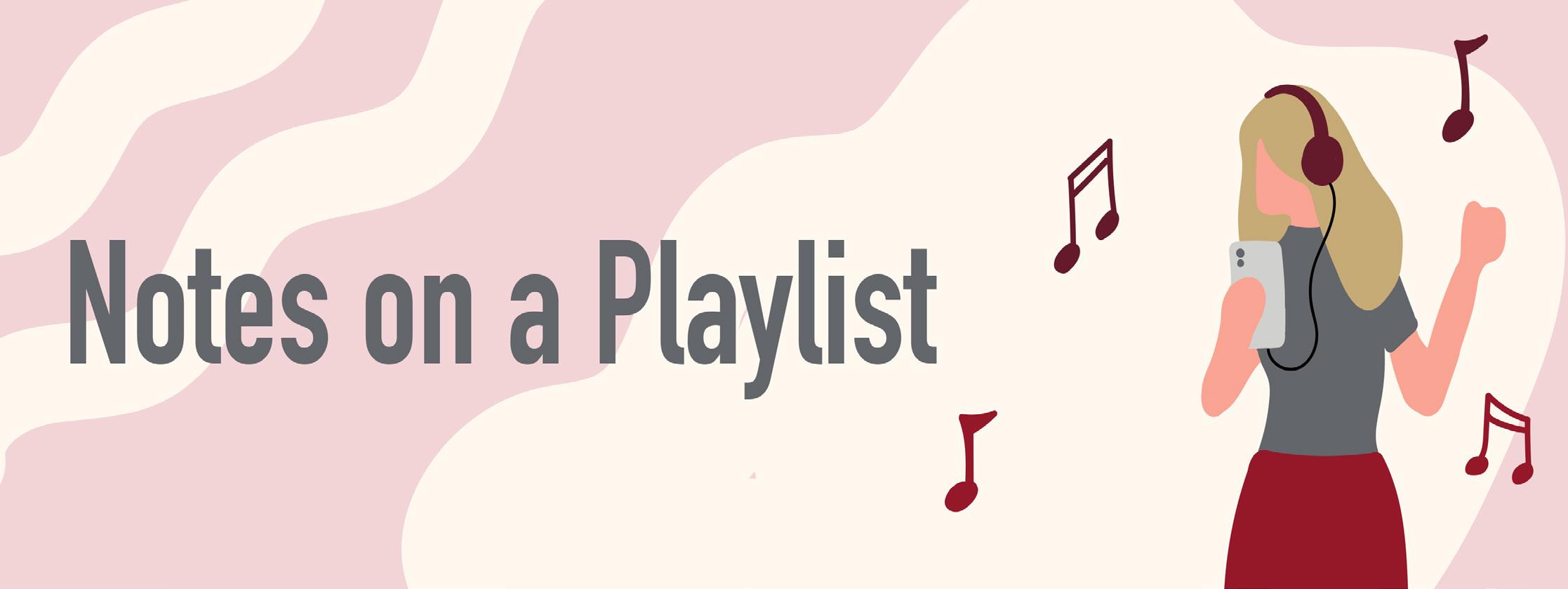 Naima Saini Columnist
Naima Saini Columnist
The first few months of the year feel full of contradictions. While the new year brings with it a fresh start and an optimistic vibe in the air, I quickly get frustrated with the winter and discouraged by the cold, dark days. This calls for a playlist that hits a very specific balance. When creating “new year new playlist,” the collection of songs I’ve been listening to the most lately, I tried to find songs that struck a balance between unadulterated happiness and sadness.
“Filming School” by Sidney Gish is a beautifully odd song that seems to be cautioning the listener against going to film school. I know I’m a little late to the party, but I’ve recently started listening to Gish’s music more and more, and I really appreciate her wryly poetic lyricism. In “Sin Triangle,” another track by the artist, she engages in geometric wordplay: “Two-faced bitches never lie/ And therefore I never lie/ Diagram this sin triangle/ But the biblical kind and not sine.” This song also samples narration from a 1951 educational short film about how to improve your personality, according to Genius. The juxtaposition of this audio with Gish’s vocals is both strange and cohesive, and somehow, it works really well.
Big Thief has written some of the most heart-wrenching songs I know, but “Spud Infinity,” one of the group’s more upbeat and quirky tracks, never fails to cheer me up and make me smile with its silliness. I love jamming out to lyrics like, “When I say heart, I
mean finish/ The last one there is a potato knish” and “A dime a dozen, aren’t we just?/ But a dozen dimes can buy a crust of garlic bread.” Not to mention, they can also inspire you when you’re not sure what to have for dinner.
Next, “Body Better” by Maisie Peters is a song about self-doubt and insecurity, but it’s so upbeat that it refuses to let you wallow in negative emotions. Peters’ sound has evolved over the years from stripped-down melodies to catchy dance-pop, and while her talent shines through in both, I really enjoy the trajectory she’s on now.
Japanese Breakfast’s “Everybody Wants to Love You” and Leith Ross’ “(You) On My Arm” are both love songs but with a subtle tinge of melancholy. In my opinion, the best love songs convey longing as well as happiness, and these two do so masterfully. The
next song, “Summer” by Mumm-ra, feels perfect for this playlist, as the singer describes a love interest who’s only truly happy in the summer. It’s a simple idea, but it really resonates in February.
I have been eagerly awaiting the return of boygenius, the supergroup formed by Lucy Dacus, Phoebe Bridgers and Julien Baker, since I was a dramatic high-school senior listening to their EP over and over again to cope with my teenage angst. Four years later, my wish has come true, because they’re releasing an album in March. Three singles have already been released, with each single primarily featuring one of the artists.
“True Blue” is Dacus’ piece, though the others contribute beautiful backup harmonies. The lyrics detail a strong bond with artful specificity, and listening to this song always makes me think of my best friends.
I’ve developed a habit of listening exclusively to unhinged-sounding hyperpop when I’m working on a last-minute assignment, to the chagrin of most of the people I live with who call it my “stressful music.” I don’t actually listen to very much hyperpop outside of that context, but “Spoiled little brat” by underscores is one exception. Something about the song’s electronic sounds and distorted vocals just engage my brain in the best way possible.
I’m looking forward to the spring and the return of my trusty warm-weather playlists, but if it’s going to be winter for a little longer, “new year new playlist” will be here. It’s the soundtrack to my walk to class, cozy evenings in my house and begrudging time spent working on my thesis. Overall, I think it’s a good collection of songs for this cold but fresh time of year.
Loeb's latest 'Apocalypse Sky' evokes sense of immediacy
Kai Speirs Features EditorCurrently on display at the Loeb’s Focus Gallery is an exhibition entitled “Apocalypse Sky,” an assemblage of about 20 works of art made in reaction to the HIV/ AIDS crisis of the ’80s and ’90s. The embryonic idea behind the show came about over three years ago, before COVID-19, with the prospect of building an exhibition around the “Apocalypse Series” (1988)—10 plates made by Keith Haring in collaboration with beat poet William S. Burroughs, who provided an accompaniment of prose poetry and audio recording from his own “Dead City Radio,” an album dedicated to Haring after his death in 1990.
Elizabeth Nogrady, who was the Loeb’s Curator of Academic Programs until 2023, had compiled works in the Loeb’s archives for a senior’s thesis on HIV/AIDS and art. She then came into dialogue with Professor of English Hiram Perez. “[Elizabeth’s] idea was that I could use the substance and structure of my Queer Studies seminar (WFQS 381) as a means for conceptualizing the shape and scope of the collection,” Perez told me. Perez and Nogrady worked to co-curate this show and slightly adjusted the footing of this exhibition, shifting the center of the exhibition from Haring’s work to art in reaction to HIV/AIDS in general.
Visually, Haring’s plates and Burroughs’ partnered prose are declarative—they express the anxieties, fear and outrage present in the moment they were made. The plates take inspiration from Burroughs’ “cut-up” technique—a random rearranging of found text into a new text (sometimes called a cento). “Mona Lisa” is defiled among phallic imagery; sperm mutate devilishly and grow horns; nuclear destruction litters the picture plane. It's an impressive lexicon of disorder; it’s apocalyptic in imagery; a mirror of the chaotic 20th century—but with a keen sense of nonconformity and political critique. The wall-text for the fourth plate reads: “The mundane apparatus of middle-class domesticity—vacuum cleaners and electric toothbrushes—are animated into violent revolt.” The prints were made in 1988, the year of Haring’s AIDS diagnosis, which would take his life only two years later. Thus, there is a sense of immediacy or urgency that permeates from the screen prints and text. Compounding Haring’s realization of his own approaching death is the urgency of getting the public to react to the HIV/AIDS crisis in time to save lives. As Perez put it, “[There is] political urgency that the artists and activists felt in fighting to save lives, sometimes lives of loved ones or even their very own.”
Urgency/immediacy is a thread that runs
pening outside of fine art circles,” Nogrady explained. We talked about how a whole militia of activists, from graphic designers to poets, were deployed to use visual and artistic terms in order to bring attention to the HIV/AIDS epidemic. “[From stickers to pins
through many of the other works on display, especially in the various ephemera that lie on a central table. “Part of the reason we wanted to include the ephemera was to show that much of the activism was hap-
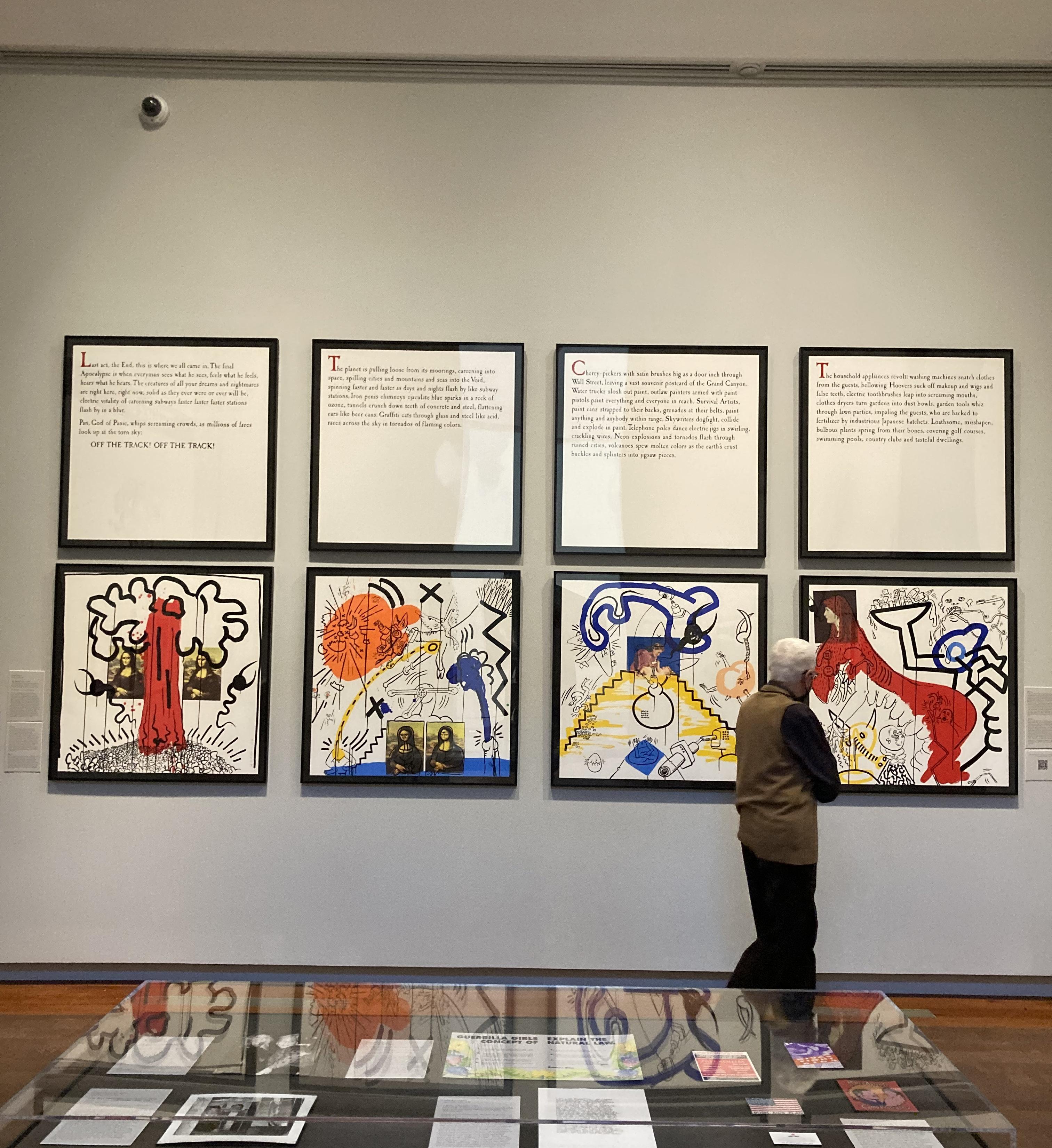
to posters to zines,] we wanted to show the layers of imagery that were being disseminated in the service of activism,” Nograndy told me as we talked about ephemera in youth culture.
Immediacy continues in the exhibition as we reach text-based work done by Jenny Holzer and the activist group ACT UP. The strikingly infamous poster made by ACT UP contains two words done in white, boxy, capitalized letters: “SILENCE=DEATH.” There is no room for aloof contemplation, a patient waiting for some content to surface from abstract form. This use of text is striking: Crisis is at hand!
I was especially fascinated by the affinity between artists and poets in the exhibition. Photographer Duane Michals’ visually lyric photographic series “The Dream of Flowers” recalls lines from Whitman’s “Leaves of Grass”: “And now it seems to me the beautiful uncut hair of graves./ Tenderly will I use you curling grass,/ It may be you transpire from the breasts of young men.”; the placard for Robert Mapplethorpe’s work references his love of radical French poet Arthur Ribuad; the Haring and Burroughs collaboration, which Timothy Leary would call “like Dante and Titian getting together”. There is some clear rapport between art and writing. When I raised this connection with Perez, he pointed me to an upcoming talk on campus which will be given by Professor Ricardo Montez from The New School on Feb. 23. He will be speaking to a queer genealogy that connects Haring’s writing-as-art practice to his collaborators and predecessors. “[The correlation between poetry and art comes from] an urgent need for queer storytelling to counteract the falsehoods and biases disseminated by the state, corporate media, and mainstream cultural production,” Perez explained.
Returning to this sense of urgency/immediacy that emanated from the artworks, I wondered if I could draw this feeling into the present. After all, an exhibition is more than a reflection on artwork of the past; it is a restaging of artwork for our own time, and we may have a lot to learn from the art at hand. I asked Perez: “Is there a sense of
immediacy in the curation of this show? That is, does our present moment, in any way, immediately necessitate a revisiting or re-exhibiting of this work and the historical moment from which it came? Essentially, why this, why now?” “Absolutely,” he began, “I hope that the sense of immediacy so palpable to you and hopefully other visitors awakens similar feelings of urgency in regard to the present-day struggle to eradicate HIV/AIDS.” Perez wants to remind us that there is an ongoing fight to eradicate HIV/AIDS and ask why HIV/AIDS has seemingly vanished from the agenda of various national organizations. Additionally, there are still huge health related disparities between privileged and marginalized communities, disparities that are made clear by the varying levels of devastation COVID has caused amongst different communities. The exhibition’s work is being extended via the creation of a WordPress website, which will act as a jumping off point for people learning about HIV/AIDS. Specifically, the website hopes to probe how race, class and gender also played a role in the impact of the HIV/AIDS epidemic (and all health and mental health crises). So as much as this exhibit is a retrospective look at art and activism in the HIV/AIDS epidemic of the ’80s and ’90s, the questions it raises are equally relevant to our own time.
Apocalypse Sky: Art, AIDS, and Activism in New York City, 1982–1992, is open through Aug. 20, 2023 at the Focus Gallery in the Loeb.
“Visually, Haring's plates and Burrough's partnered prose are delclarative—they express the anxieties, fear and outrage present in the moment they were made.”
“As much as this exhibit is a retrospective look at art and activism in the HIV/AIDS epidemic of the ’80s and ’90s, the questions it raises are equally relevant to our own time.”
Dorm room decor contest showcases students’ creativity


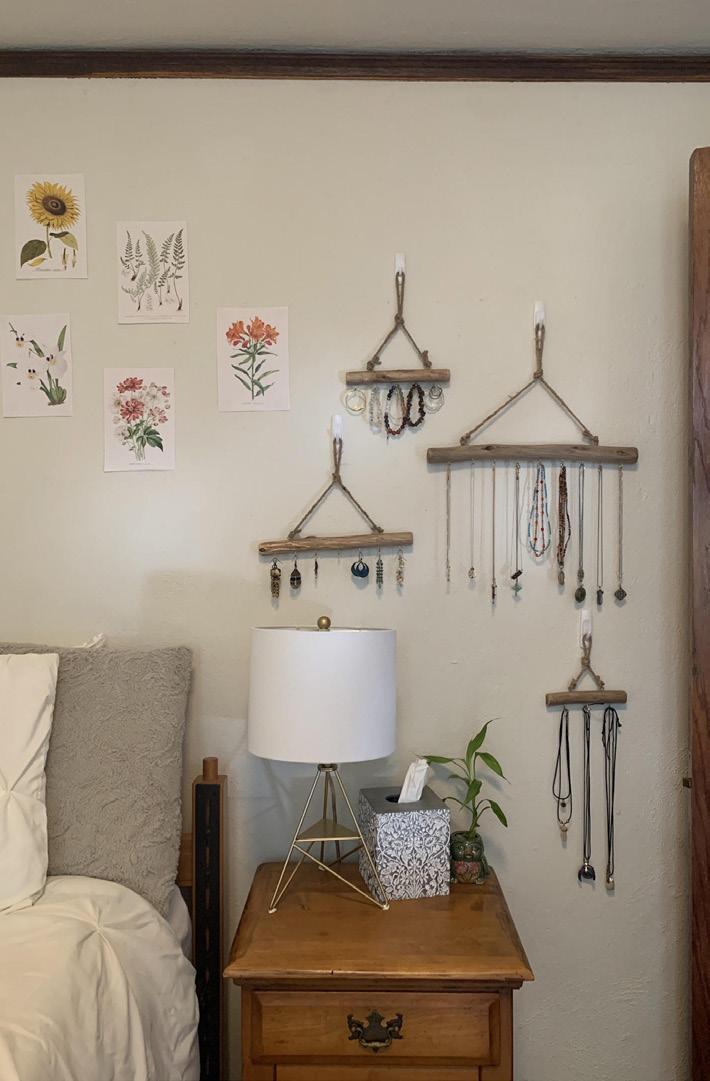
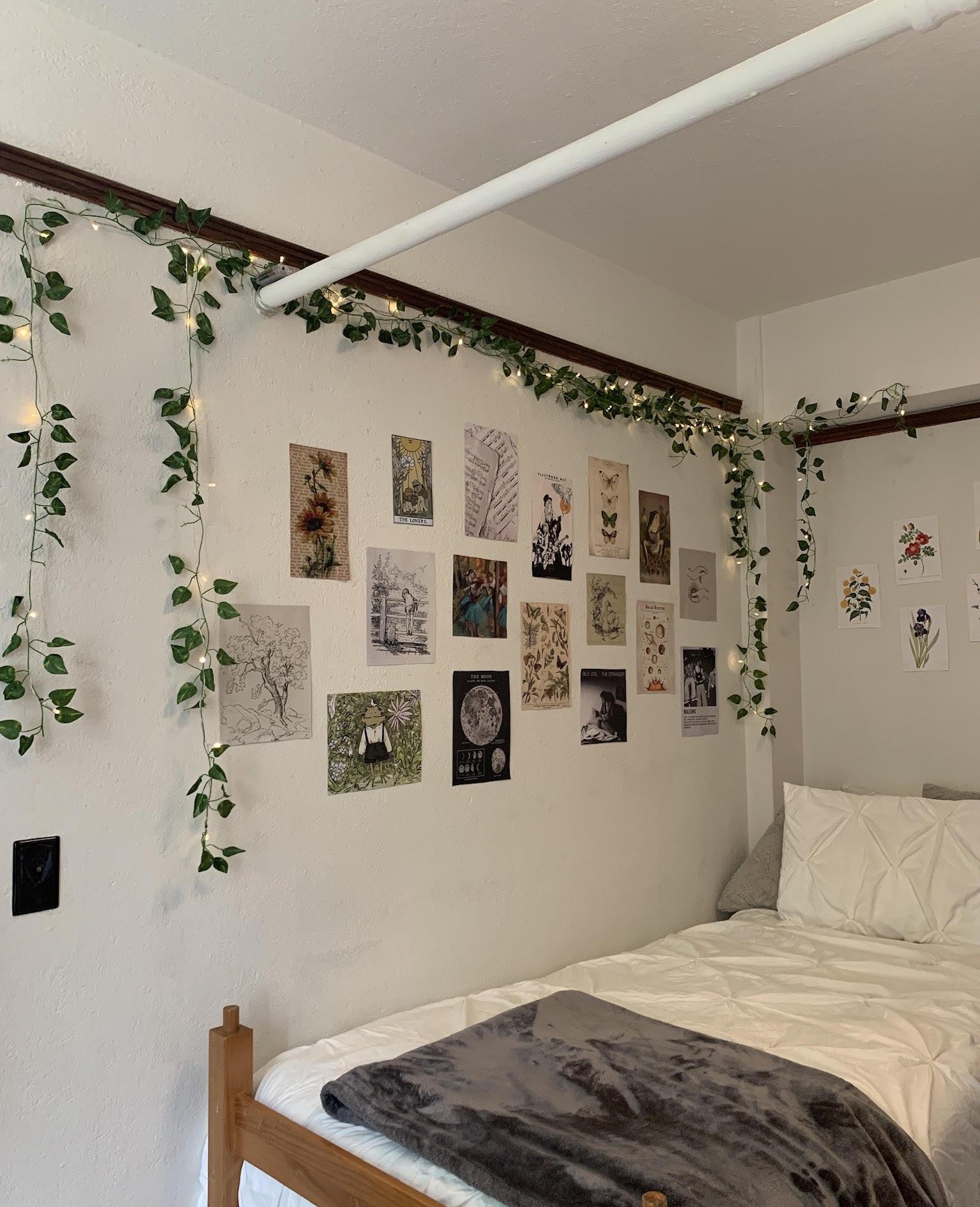


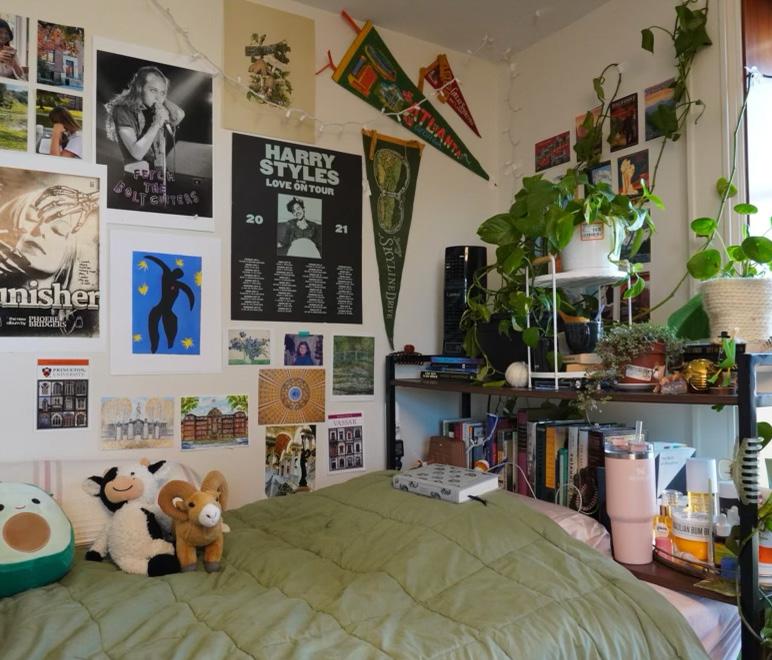
Continued from Dorms on page 1
First runner-up: Sarah Schuster ’25, Cushing
I loved this classy, minimalist room! From the Polaroids above the desk to the hanging jewelry organizers, we love the soft, organic feel of this room. The window wasn’t Schuster’s doing, but it still frames the plants and lights hanging around it with beautiful natural light. We also love the consistent color palette, with muted neutrals, greens and pinks throughout.
Second runner-up: Tahareem Ali ’26, Strong
What a beautiful room to close out our winners circle! The pressed flowers in the entryway create such a warm and welcoming environment, and we love the celestial decorations. This is a room that looks super comfy and liveable; you can tell Ali loves living here by the TLC they’ve obviously put into their decor and surroundings. The beautiful quad view certainly doesn’t hurt either!
Thank you to all of those who entered this contest! It brought us so much joy to see your spaces, and it certainly left us with many decoration ideas. Congratulations once again to the winner and runners-up!
Professor Randy Cornelius celebrates 42 years at Vassar
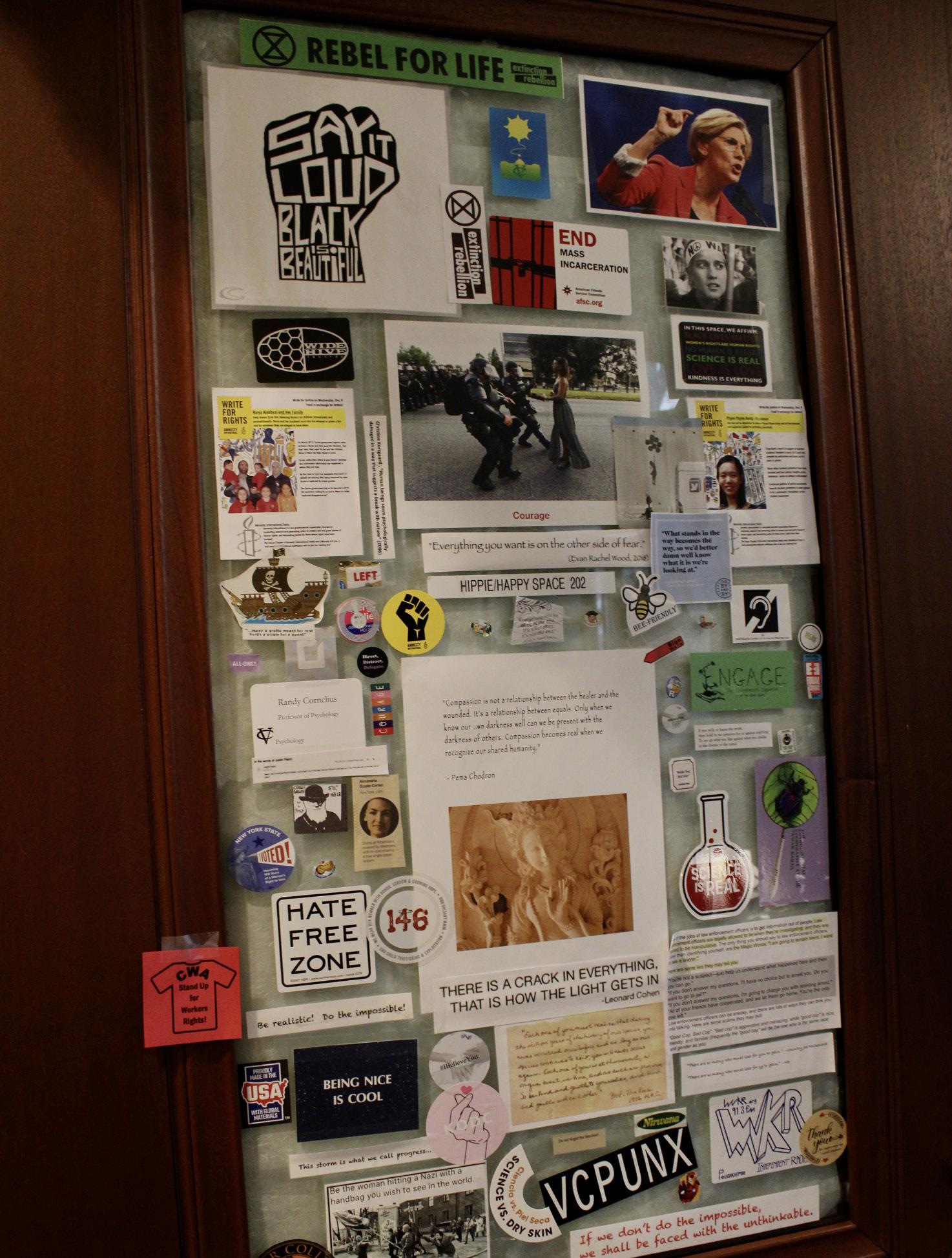

by his mentor to apply to graduate school in order to pursue research. He then went on to earn a Masters and PhD from the University of Massachusetts Amherst in 1979 and 1981, respectively.
Post-graduate school, Cornelius set out with the intent of becoming a researcher. He was initially denied when he first applied for a job at Vassar, where his then-wife had accepted a post-doctoral fellowship. In a twist of fate, he was later hired as a Visiting Professor of Psychology in the Spring of 1982. As time went on, he found that he enjoyed teaching, especially at Vassar. It eventually became a part of who he was and he found that he loved it. The sense of belonging he felt has been a large part of what has kept him at Vassar long-term. “I trust my students [and]
I love their sense of learning…The love of learning that some of them have, that’s what I had…Having the honor of helping students along…is just what I love,” he told me.
Cornelius’s life’s work has revolved
around the study of crying. When he began researching the subject, he assumed there would be many previous studies to build off of, as it was likely to have been studied before. He quickly found that was not the case, and he had his work cut out for him. In his first study, Cornelius asked participants to describe the last time they cried in the presence of another person, whether it be happy or sad crying. The results of the study transformed the way he thought about crying, as he found that it was significantly related to attachment. Cornelius further explained that crying is a tool that humans are born with, as babies often cry to get the attention of adults and fulfill their needs. This is then carried on through the stages of development, and the repeated responses become the basis for how relationships are formed. His expertise in the area has been featured on an episode of NPR’s “Shortwave” podcast as well as in an interview with CBS’s Jim Axelrod.
Outside of the Psychology Department, Cornelius has contributed to and taught in
the American Studies and Cognitive Science
Departments as well as facilitated the founding of the Environmental Studies Program. As a keen environmentalist, he has taught classes covering topics such as the climate crisis and mushrooms, the latter of which he has an affinity for.
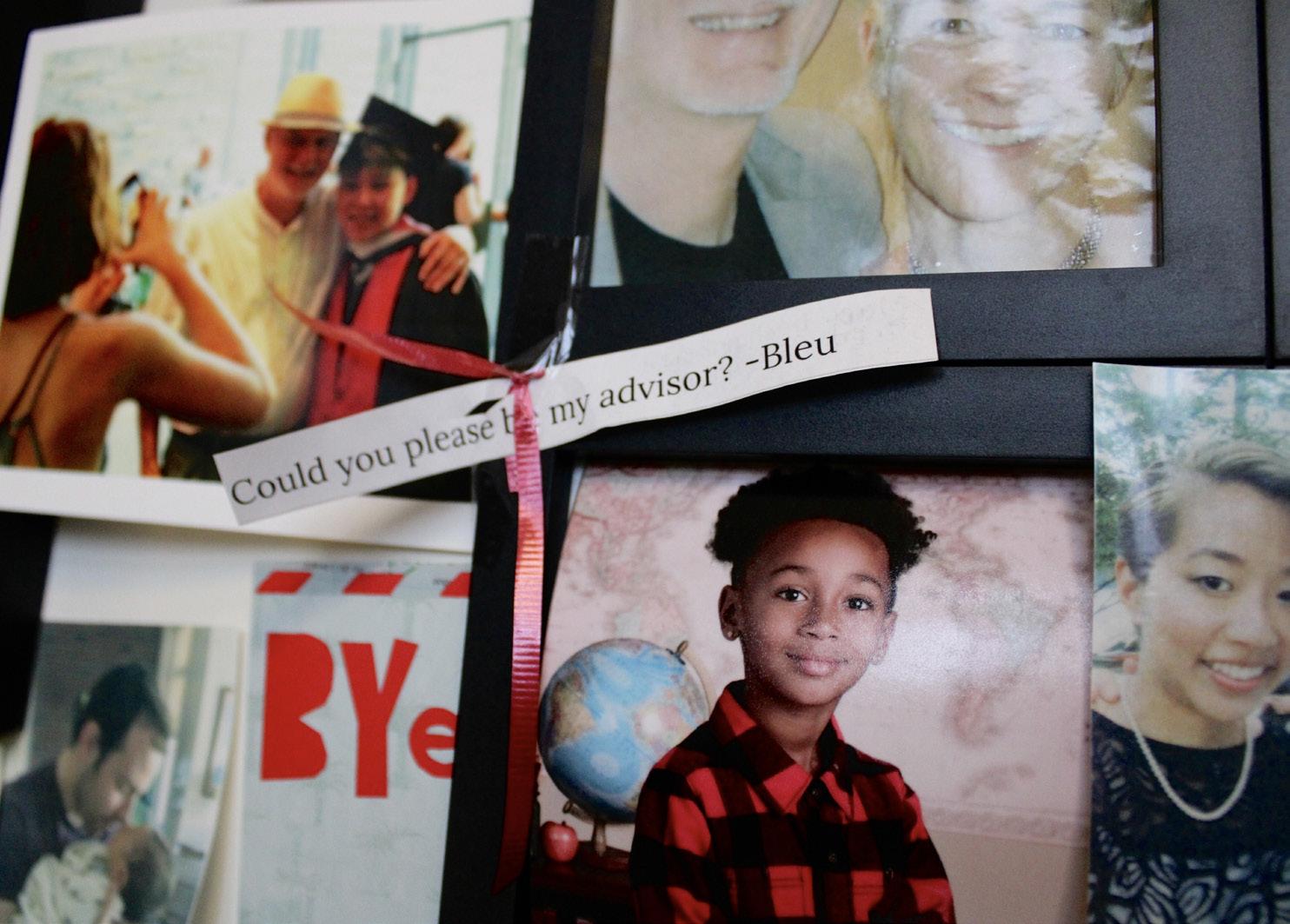
In addition to his academic work at Vassar, Cornelius and his wife Kathy were House Fellows for Cushing House from 1996 to 2000. He recounts that many students would drop by to visit the various pets they had. They enjoyed their time as House Fellows so much so that they later accepted the same position in Davison House from 2009 to 2012 with the goal that they would make Davi “the family dorm.” In their second year, there was a hurricane during first-year move in, and students were confined to their dorms. In an effort to make light of the situation, Cornelius and Kathy set up board games and card games, inviting students into their home.
As the gathering grew, student musicians brought out their instruments and formed impromptu bands. Reflecting on the situation and the initial goal for the house, Cornelius commented, “It was just a wonderful couple of days and then that continued on through the life of the dorm when we were there.”
Outside of the classroom, Cornelius played

bass guitar in a band with former Professor of American Studies Tom McHugh. Music was one of the ways Cornelius was able to connect with the student body outside of the classroom, and the band became a mainstay of his time at Vassar. He recounted, “When students see you at a bar and you’re playing up on stage…and you’re chugging down some tequila, they look at you different when you come into class next time.” The band cycled through many members, including times when one or two students would be a part of it.
In retirement, Cornelius hopes to continue his role as a teacher through writing. He wants to continue to contribute to the greater world primarily through climate change advocacy, personal and professional research and publications. Amongst other creative endeavors, he is working on an autobiography. He also hopes to spend more time visiting his kids and grandkids.
When asked if he had anything he wanted to say to the community, Cornelius remarked, “Vassar’s been my home and I’ve lived here longer than I’ve lived anywhere else in my life…[It’s] been my first and only job. It had some ups and downs, but who could want a better job [than] being surrounded by these smart, motivated, interesting students…This is heaven for me.”
Strolling the stacks, randomizing an artistic education
Luke Jenkins Assistant Features Editor“Stop.”I freeze. My eyes turn toward the book my hand rests on. Its spine is intimidatingly large. “Let’s try again,” I squeak, picturing myself struggling through the 400 page behemoth. I turn to another shelf. My mission is noble, albeit unserious: to read a random book from Vassar’s Art Library. A daunting task, never been done before. I place my left hand on the edge of a new shelf, close my eyes and start walking. My friend repeats herself. “Stop.” A-ha. I gently pull out a thinner book—covered in an odd blood-red fuzz— and prepare to get comfortable.
My motivation for this quick read is an intrinsic sense of duty. A devoted studier in the Art Library, I've trotted past the stacks one too many times without admiring their silent glory. With the hours I’ve spent surrounded by these books, I owe them at least one pityfilled pursual. One read for all those hours spent lounging around turquoise tables, all those glances out the window wondering if I could do a sick backflip into the courtyard. For all those afternoons splayed out in the weird chairs that look like they’re from a sex dungeon.
Later I check out my book, “Paintings from

the Frick Collection,” and slide it into what little space I have in my bookbag. It looks— and feels— like a grimoire, one I lug around campus with caution. I pull it out in my downtime, hunched in the Brew, curled up in bed, in the library itself. I read it slowly, like a train, mindlessly chugging along.
The book itself organizes, describes and analyzes the paintings displayed in the Frick Collection in New York City. Curated by Henry Clay Frick, who chaired the Carnegie Steel Company, the works are the result of a lifetime of art collection. After Frick and his wife’s death, their art was made available as a public museum in the 1930s. A notorious opponent of organized labor, Frick’s actions led to the Homestead strike in 1892, where 10 men were killed and many more injured. This information was not included in the book. It’s a solemn reminder of the oftentimes hideous history surrounding art and its collection.
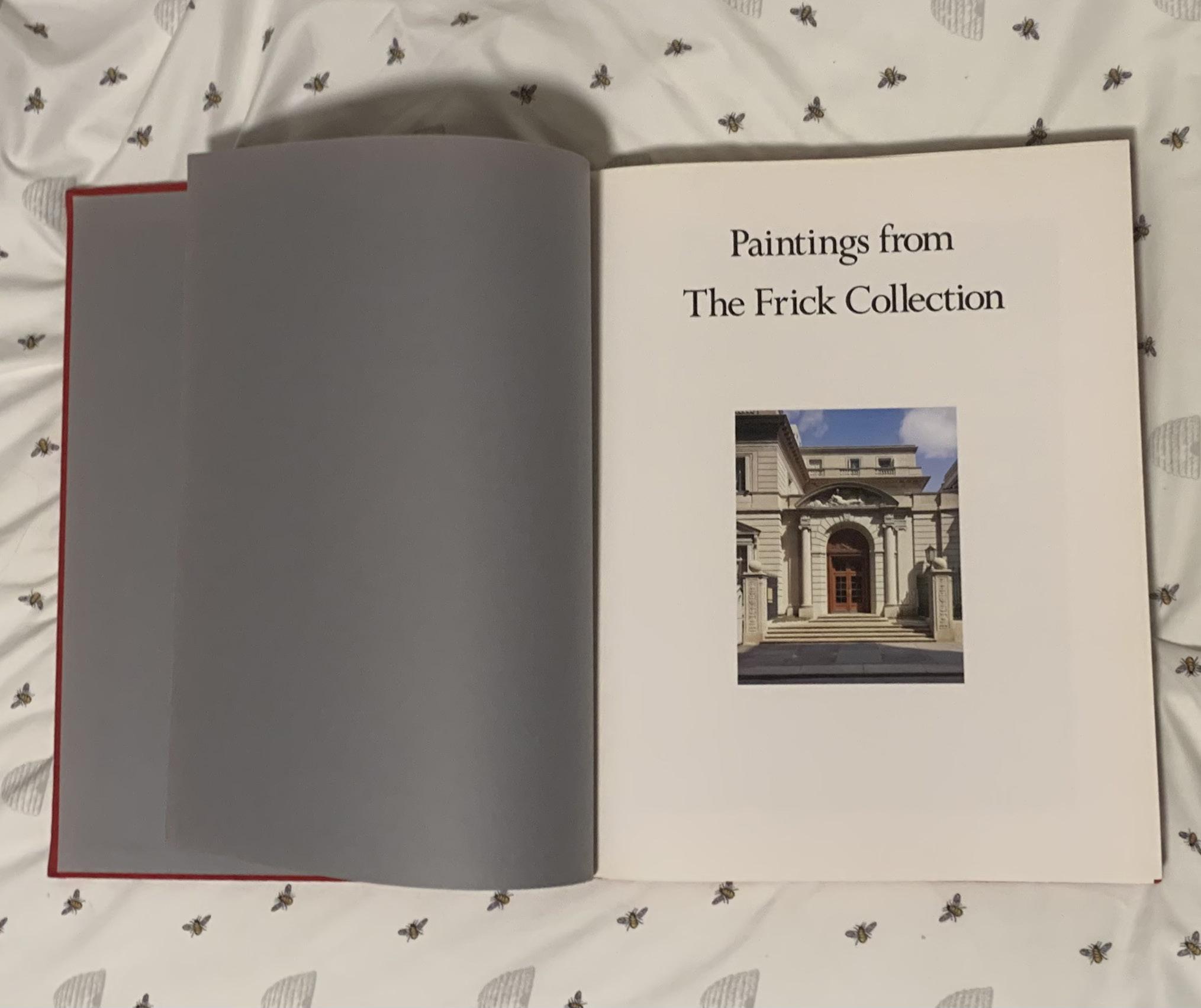
I approached each painting, organized chronologically by the date of creation, with two mindsets. First, with all the pretentious grandiose of an overconfident and unqualified art critic, I licked my thumb thrice to turn the glossy pages. My mouth scrunched as I contemplated the religious overtones in a still life of plums. I imagined myself at an art gallery, black turtleneck itching the stubble of my neck, champagne flute held between pointer and middle finger, tsk-tsking at the counterculture nepo-baby that disappointed me that week. I was Anna Wintour, chopping five inches of my hair, straightening it ’til it’s fried, exclusively wearing floral.
The second mindset I used—and the one closest to my heart—was of the modern American teenager. Ralph Waldo Emerson wrote that there is not only creative writing but creative reading as well. Approaching this book authentically, like we’re in the 21st century, helped me try my hand at “creative reading.”
I can’t say it went well. “This is gas,” I remarked about another depiction of the Crucifixion. “Tea,” I muttered as I stared at Titian’s “Portrait of a Man in a Red Cap”. This creative reading must be a skill, in my case an unde-
veloped skill, one that must be practiced with more than one thin volume.
My favorite part of the experience, ignoring whatever sham mindset I was forcing upon myself, was the subtle jabs the editors snuck into the captions. The ironic placement of Hans Holbein the Younger’s painting of Thomas Cromwell next to his portrait of Sir Thomas More. For context, Cromwell was largely responsible for the execution of Thomas More. That was definitely a jab, although in this case, it’s not that subtle. When describing one of the Rembrandts in the collection, a self-portrait from 1658, the caption notes that the Dutch artist “created an image of strength and worldly power that seems to contradict the external facts of his life. A small man, he portrayed his figure in monumental dimensions.” This violation of Rembrandt was, well, incredibly funny. I enjoyed the book for the nice paintings, yes, but the added layer of hot gossip kept me interested. Reading how artist after artist achieved great
infamy, only to end up dying in obscurity and debt, was sadly, a very juicy plot twist.
As for my favorite works, I spent quite a long time enjoying Thomas Gainsbourough’s “The Mall in St. James’s Park” and Joseph Mallord William Turner’s “Mortlake Terrace: Early Summer Morning”. Gainsborough’s work is fun because of its dynamic movement. In it, strolling ladies and sprawling trees are shrouded in a wave-like haze. In Turner’s work, we see a similar muted color scheme, this time a view of the Thames from a terrace. Something about the way the light shines in the painting’s sky has me hooked.
As for if a possible visit to the Frick Collection lies in my future, that’s yet to be determined. But what I do know is the little voice inside of my head, powered by a karmic debt, has hushed—for now. If I’m ever drawn to check out another menacing book, if that voice starts up again, I’ll be sure to write again, even if only to inform you of a centuries-old morsel of gossip.
"I imagined myself at an art gallery, black turtleneck itching the stubble of my neck, champagne flute held between pointer and middle finger, tsk-tsking at the counterculture nepo-baby that disappointed me that week."Karen Mogami/The Miscellany News.
HUMOR
Breaking News
From the desk of Madi Donat, Humor Editor Construction project outside Walker Field House discovers Matthew Vassar’s engraved septum
ring
The Love Queen: Ghosting and kinks and bad dates, oh my!
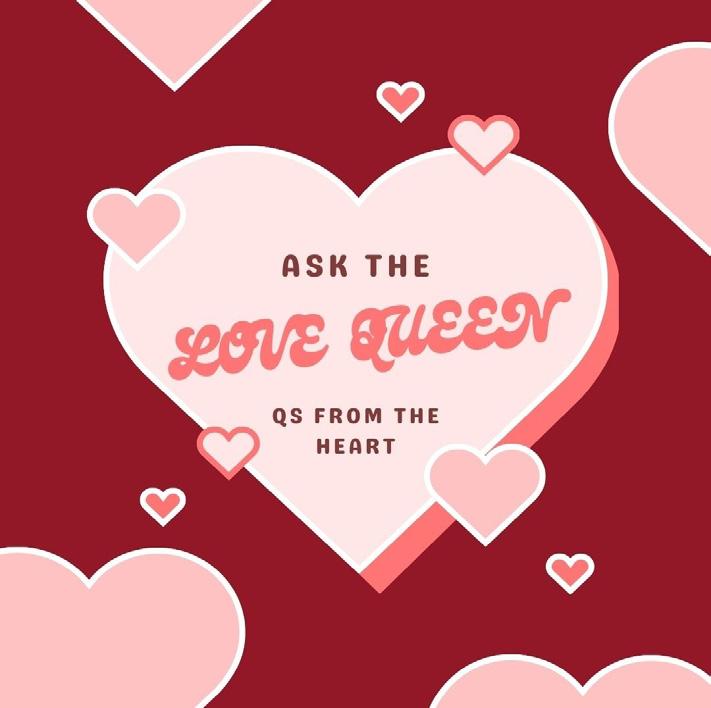
Irecently went on a first date with someone and we ended up hooking up later that night. I wasn’t that into him, yet I slept with him regardless—a girl has needs after all ;) But now he keeps asking me to hang out again, and I really do not want to. How do I ghost him in a way that doesn’t hurt his feelings or make me a bitch?
Hey, queen! Don’t worry, I feel you. We all get the ick sometimes. The sex was probably more amazing for him than it was for you, so it’s understandable why he’s falling head over heels while you’re running in the other direction. But I’m not here to judge. I’m on your side—the Love Queen is here to help :)
Here is my ghosting strategy: If you have been Snapping, start Snapping less frequently—ideally two to three times per day. Seem as uninterested as possible. Stop responding with your hot-ass selfies—instead, send one of those cut-off shoulder pics, or a blurry background or pics of the people you’re hanging out with so they get the hint that
you have a life. If they keep bugging you, just leave them on read/opened. Or channel your inner fuckboy and respond with one word answers: “k,” “yeah,” “cool.” In the end, if they keep trying, unadd them! Block them on literally every single social media so they have no way of contacting you and asking, “Why did you remove me on Snapchat? Did I do something wrong?” or, “Why, when I pass you in the Deece, do you sprint in the opposite direction?”

But there is a more direct way if you’re looking to expedite the process. You could be a classy bitch instead and respond, “Hey, look, I know we had a nice date and ended up hooking up, but I actually didn’t feel a spark between us, and I’m not really interested in pursuing things any further. You’re a nice guy and I hope you find what you’re looking for, but it’s not going to be me.” Feel free to use that word-for-word (we all plagiarize in desperation sometimes). Good luck, bestie!
P.S. Take this situation as a lesson to maybe not hook up with someone after a bad date.
I found out my boyfriend has a weird kink that I don't like. What do I do?
Hey, queen! We all have our kinks ;) Mine, personally, is being peed on. I’m kidding, of course. That was a “You” reference— have you seen the new season? But anyway, I’m not here to kink-shame. However, that does not mean that you have to engage in someone else’s kink if it makes you uncomfortable. First, you need to evaluate if this
Nina Ajemian/The Miscellany News.kink is a deal-breaker for you. Sometimes it is, and sometimes it isn’t. Being an animal in bed? Yes, please. Bestiality? Hope not! But whatever gets your Rice Purity score lower. All jokes aside, you should probably have a conversation with your partner in which you ask about the kink, why they like it and whether you can compromise or modify it in some way so that you’re more comfortable with it. Good luck, bestie!
How to sleep as snug as a bug in a rug
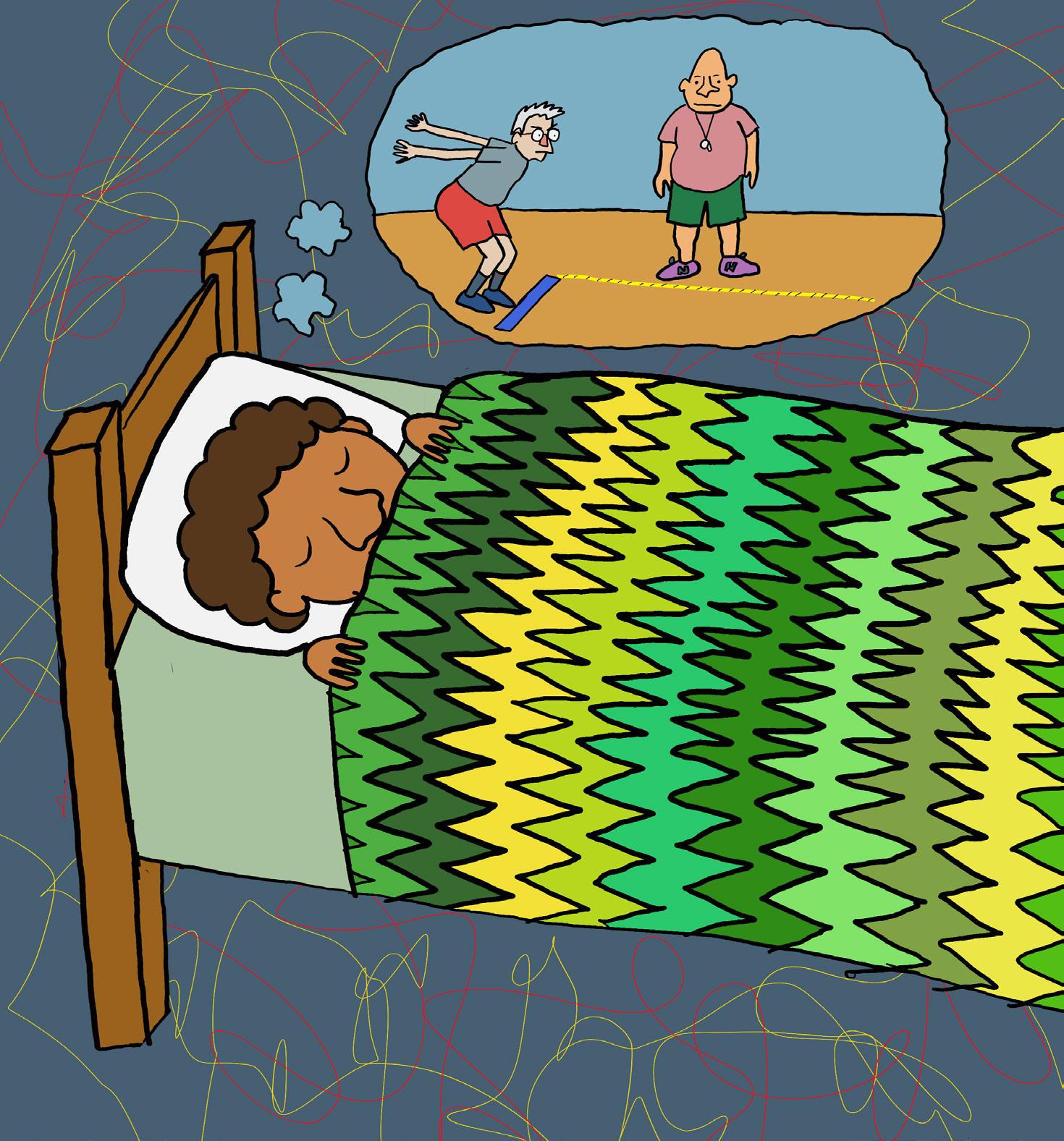
Alot of people ask me, “How do you sleep at night?” and I tell them, “Certainly not by mulling over my past transgressions. Irreparable damage is a daytime thing, and sleeping tight is my only nighttime consideration.” If you are instead asking about the quality of my sleep, it is just fine, but probably like you, I’m always looking for ways to improve it.
Everybody has to sleep. Most nights, you, Anderson Cooper and 50 Cent are all sleeping at the same time, usually in different rooms. People sleep in a variety of ways and on a variety of surfaces: some in bunk beds, in the grass, in a short bed, in a tall bed, maybe even in a four-person bed like Grandpa Joe did in “Willy Wonka and the Chocolate Factory.”
In my journey to potentially improve your sleep, I would first like you to consider your environment. If you’re having trouble sleeping, making changes to the things around you can really help. A great first step might be hanging up photos of other people sleeping on the walls of your room to create a good sleep culture, and with the magic of stock images, these don’t even have to be photos that you’ve taken yourself. Additionally, you could put a sign on your door that says, “People sleep here.”
Roommates are a big part of your sleep environment, if you have them. Both of my roommates last year would occasionally talk in their sleep, to the extent that one night it sounded like they were having a fun dream together and purposefully excluding me. If this ever happens to you, I recommend just responding to whatever it is they are sleep-muttering as if you were part of the conversation the whole time. Naturally, sleep will soon overtake you.
Another environmental factor can be a certain kind of ’station—no, not a train sta-
tion, but an infestation. Based on conversations with friends and overheard bathroom banter, I’m convinced that every dorm room on the second floor of Main, including mine, has inhabited a mouse for some period of time this semester. I can only assume that a certain mouse-themed article from the Humor section last semester may have cursed this to happen. I remember the first night that I heard a mouse rustling. That night, I had three consecutive mouse dreams followed by an interlude where I was at a nice science museum (fun) and then three more consecutive mouse dreams.
To avoid having such copious mouse dreams, I recommend tapping into your imagination before falling asleep. The magic of being in the dark is that you can always pretend that you’re not in a room with something you don’t want to be. You could instead pretend the various scratching noises that you hear at night are coming from a friendly horse that you live with and who occasionally says funny one liners.
Maybe, after adhering to these environmental pointers, you’re still awake after your expected time of dozing. Worry not, for there are plenty of ways to stimulate your brain into slumber.
As my mother once taught me, counting down from a hundred can be a great brain game in a time of sleeplessness, but it is also a dreadfully boring one. I recommend instead ranking all the professors you’ve had, in descending order, by standing long jump abilities. Chances are you’ve never seen any of them do such a jump (or any jump, probably). Additionally, there aren’t many professorial long jump competitions that have ever occurred, and most professors at Vassar haven’t put up numbers at the NFL combine, so you’re going to have to rank your professors purely based on intuition. To help with this, I recommend visualizing
each professor standing on the tape line and doing the jump, projecting where they would likely land along a tape measure, marking from the heel of the foot farthest back. If you’re having trouble creating your rankings, I recommend going to a professor’s office hours with a tape measure and asking them to perform. The distance they score can serve as a good baseline for ranking professors with similar attributes. Did that work? No? Well, darn, I guess I’m out of ideas. Not sleeping at night is al-
ways an option (one dude stayed up for 11 days, look it up). Once in a while, it can be fun to walk into a classroom the next morning knowing you will be woefully unqualified to contribute anything of use or coherence. The magic of sleep is that you can always try again the next night. You, me, Anderson Cooper, 50 Cent and everybody else typically residing in the Eastern Time Zone are all in this together, trying our best to sleep as fair as a bear with a prayer (down by the bay), or whatever the saying is.
'Stop calling me the Sex Tree': Campus landmark speaks out
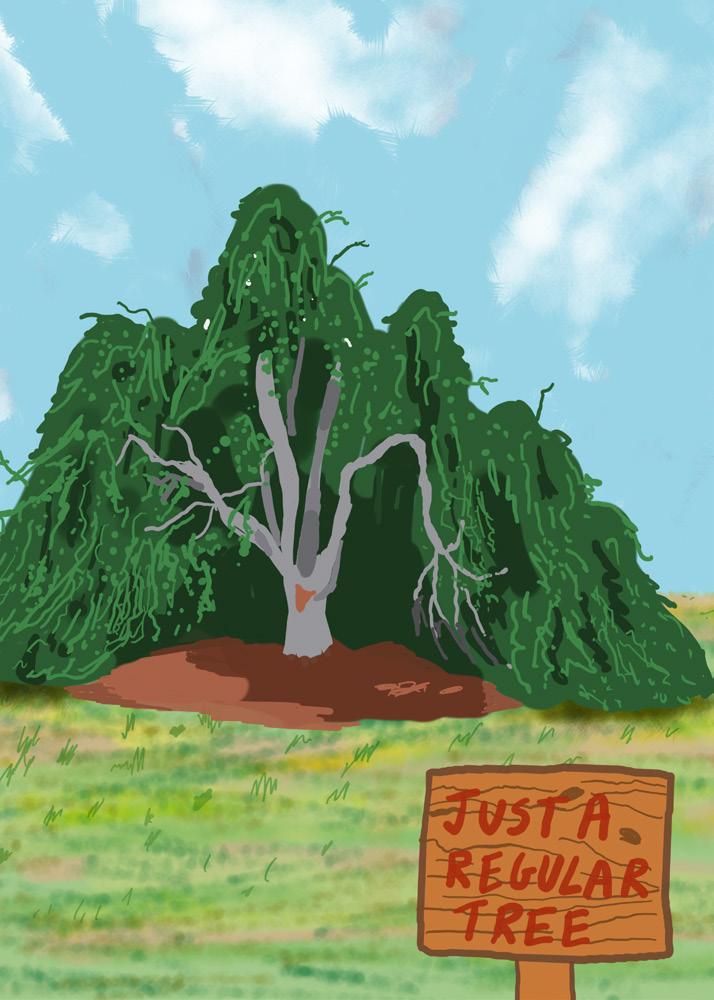
Please stop calling me the Sex Tree. I do have an actual name, you know. I think “The Class of 1963 Tree” has a very nice ring to it, and I would appreciate it if you people would have some respect and start using my real name.
Look, the whole “Sex Tree” thing may have started out as a joke, but it’s gotten old real quick. Just because some people had sex under my beautiful branches one time doesn’t mean I should be called the Sex Tree forever. It hurts my feelings, and I don’t even think it’s very accurate. I didn’t ask them to come have sex here, for your information. They just kind of showed up, and before I knew it they were going at it like rabbits.
How would you feel if someone showed up in your personal space and started get-
ting down and dirty? I’m a tree! I couldn’t go anywhere! That experience scarred me for life, and you people remind me of it every single time you call me the Sex Tree. If something like that happened to you and everyone started calling you “Sex Steve,” would you like it? I don’t think so.
Besides, if you’re all going to call me the Sex Tree, I think you should at least show a little consistency. Do you put “sex” before the name of every place where someone had sex one time? It’s not called “the Sex Deece,” is it? I’ve never heard anyone say “the Sex Vogelstein Center for Drama and Film” or “the Sex Quad,” so how come I have to be the Sex Tree? If you were ever to have sex (unlikely), would you start going around calling your room “the Sex Room?”
Anyway, do you think I’m the only tree on this campus that has ever played host to a little action? People have sex in the Class of
’84 tree and the Class of ’78 tree all the time, and those trees over by Sunset Lake have seen things you people wouldn’t believe. Why does nobody ever talk about that? The Class of ’82 tree has some stories that would make your hair curl, and I know for a fact that sap isn’t the only fluid that has dripped down the trunk of the Class of ’55 tree. The Class of ’69 tree has earned its name on multiple occasions, but all I hear is “Sex Tree, Sex Tree, Sex Tree.” Give me a break!
Ultimately, I think it comes down to a matter of respect. I’m just a regular, non-sex tree, and I wish everyone would take that into consideration and treat me with a little bit more regard. How about a nice, platonic hammock nap in my branches some time? Or a pleasant, chaste picnic as the spring breeze stirs my leave.
Just a couple of ideas. This is the Class of 1963 tree, signing out.
Poetry Corner
KozloskiAn exceedingly menacing maid Loved to creep through the halls in the shade. Whispering oaths no one knows, She’d leap about on her toes And take jabs at the air with a spade.
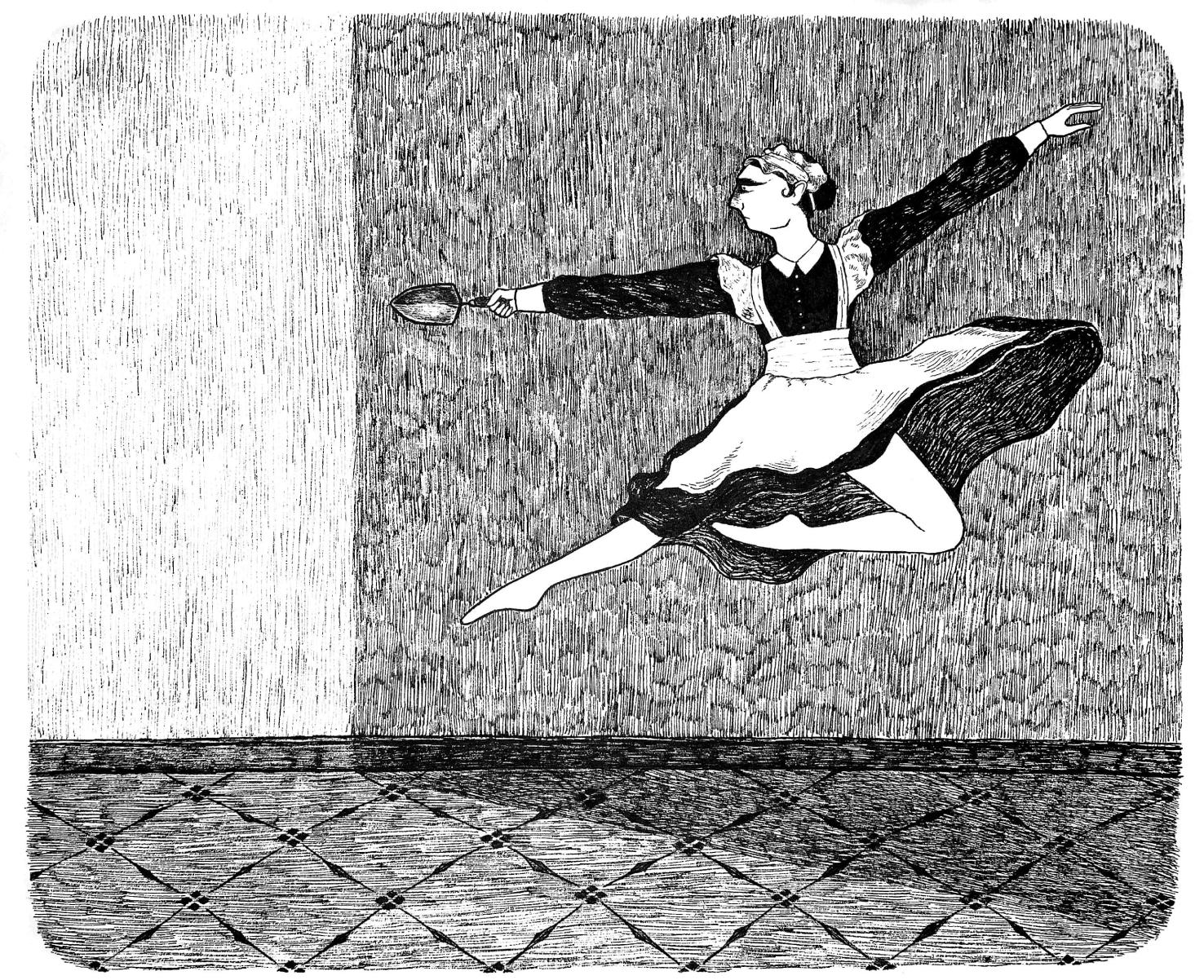
ARIES
March 21 |
April 19
HOROSCOPES
Madi Donat Astral ProjectorRunning away could solve all your problems, or it could cause more. Sometimes causing problems can be fun, though, because it allows you to see new sides of people. No one is more real than when they’re dealing with someone who temporarily fucked up their day. Keep this information close; you may need it later.
LIBRA
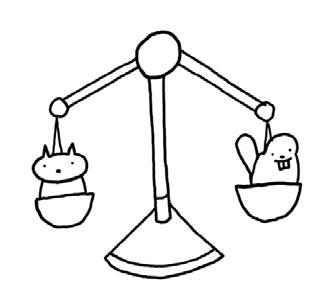

Sept. 23 |
Oct. 22
Being showered in affection sounds like your kinda holiday! In a month where everything is pink and gorgeous, surround yourself with things that make you happy, and let them spur you towards positivity and happiness, even if you happen to be single this year. Why not buy a little heartshaped cake for yourself? You deserve it.
TAURUS


April 20 |
May 20
Loyalty and honesty are very important for maintaining relationships, but they can also prove useful for other facets of your life. Have you been loyal and honest with the mysterious stains in your room lately? Do you know where they came from? Are you prepared to take the blame, or the dent out of your deposit?
SCORPIO
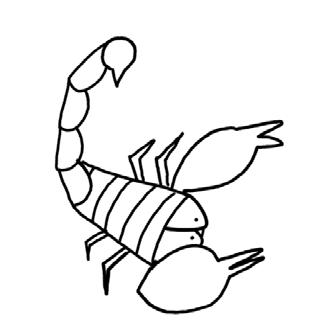
Oct. 23 |
Nov. 21
Undergoing a violent yet necessary transformation? Emotional or physical; either is relevant. Examples: breakup, thesis, tattoo, werewolf. All equally valid. It can be cleansing to change yourself in a way that seems irreparable but actually makes you reach your fullest potential. Just don’t maul anyone, please.
GEMINI

May 21 |
June 20
Sometimes, things that are mushy and gushy can be great: love letters, for instance, or hugs. Somaetimes, though, things that are mushy and gushy can be awful, like the two-week old bag of spinach in my fridge slowly melting into goop. Learn the difference between good and bad mush this week. It may save you.
SAGITTARIUS
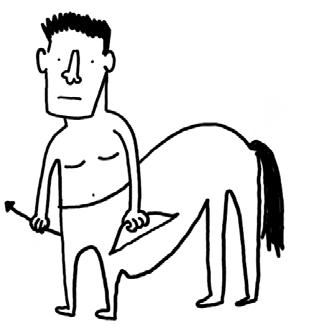
Nov. 22 |
Dec. 21
I know we all joke about touching grass, but it is literally healing. Have you ever sat down in a field and done literally nothing? Or looked at the sky like you’re in some kind of Wes Anderson film? It’s mesmerizing! Find shapes in clouds this week! They probably aren’t omens or messages. I don’t think.
CANCER
June 21 |
July 22
There are times when people say things that sound mean, but they really aren’t. People are just tired, or annoyed at other things or preoccupied. Maybe. Or maybe they secretly hate your guts and are plotting your demise and have hired a mobster to go after you. Always stay vigilant—the mob doesn’t play around.
CAPRICORN


Dec. 22 |
Jan. 19
LEO

July 23 |
Aug. 22
You are simply the life of the party, and that’s great for you. It’s nice when everyone wants you around. Have you considered, though, that that may be because of your knowledge of the curse? You know, the curse. Oh, don’t pretend you don’t understand what I’m talking about; I’m not stupid. I’m onto you.
Organization is super key for things like homework, laundry day and art heists. All three of those activities are equally taxing and pose pretty much the same threat on your well-being. Not that I’ve ever done an art heist, but I actually feel like it would be more emotionally fulfilling than the homework or laundry. Hypothetically.
AQUARIUS
Jan. 20 |
Feb. 18
Aggression and annoyance are telling feelings, so don’t feel bad for having them. It can even be helpful to think about letting out your anger and not act on it. Next time you are faced with atrocities such as midterms or the current price of eggs, envision catharsis and then take deep breaths. It probably won’t work, but it can’t hurt to try.
Are you feeling passionate and poetic this week? Try your hand at some rhyming couplets or haikus if you’re not a natural poetry person. Here’s one I wrote for you: “This week might be hard./Still, don’t let that get you down./Sleep is good for you.” See? It’s not that hard! Creativity is so fun.
PISCES
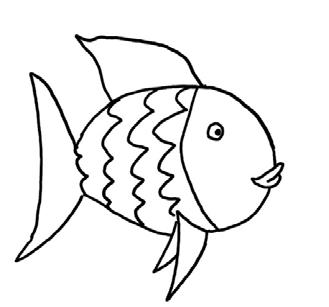
Feb. 19 |
March 20
Sobbing multiple times a week can be cool, but one thing that can be even cooler is not doing that. It’s great to feel your feelings, of course, but sometimes it’s okay to tell your feelings that you’ve had enough for the day. You can always resume tomorrow! Don’t shut your emotions down, just shut them up. For now.
How to beat the disastrous lunch rush
As a busy Vassar student, it isn’t always easy to find time for a nice lunch. With four classes, 40 hours of homework and 400 extracurricular activities to balance at all times, you might feel like you just can’t make it to one of Vassar’s wonderful dining options for a tasty, balanced meal. Well, I’m here to tell you that it can be done! Lunch doesn’t have to be a privilege for the idle rich in their diamond towers. Just follow these easy tips to fit in a healthy midday meal each and every day!
Tip Number One: Manage your time! One good thing to remember about being busy is that having an insanely stressful pile of obligations, chores and overdue bills isn’t late-stage capitalism’s fault—it’s YOURS. A healthy dose of crushing guilt should be all the motivation you need to get things in better order. Think of how sad you feel
when you turn in an assignment late or almost miss a meeting because you had to run across campus to get to it. Then beat up yourself at least that much whenever you miss lunch!
Tip Number Two: Location, location, location! It’s important to choose a good place to eat from among the available options. Looking forward to a delicious meal is one of the biggest motivators to make time for lunch, which is why so many Vassar students think about the campus dining areas and decide not to bother. But that’s no good! Each possible option offers unique and attractive benefits for those who choose it. For example, the Deece chicken is 2% less undercooked on average at lunch than at dinner. Meanwhile, Express’ cold, dry sandwiches taste just like mama used to make and then throw in the fridge for four hours. Season your meal with the knowledge that, under Vassar’s meal plan, it literally costs
you like $15. And don’t blame the workers— they aren’t the ones who decided to charge that much and then order the ingredients from Sysco!
Tip Number Three: Phone a friend! Still can’t muster up the motivation to go eat a zucchini and squash rice bowl at The Retreat? Well, I can’t blame you—if it’s SUMMER squash, then where the heck are they getting it from now that it’s WINTER? But you can hold yourself to your lunchtime goals more easily by getting a friend to come along with you. My advice is to get one of the booths at the Deece or the tables in the College Center for a more luxurious lunchtime dining experience. To secure this privilege, you will simply need to meet for lunch at 7:30 a.m. But that’s okay—the Italians are famous for their long lunches, and nobody runs a corrupt soccer league like they do. So clearly you can still get things done despite taking breaks!

Tip Number Four: Dine out! Still not feeling the Vassar lunch vibes? When all else fails, Arlington has it! Sure, you’re supposed to be saving money so that you can pay for your exorbitantly expensive Vassar tuition, but just look at the news: The world will end before that can happen. So why bother worrying? Wendy is out there, calling to you with her famous 4 for $4, my, she’s looking sultry today. Just give in to your temptations. It’s still Valentine’s month, after all!
So there you have it: four hot tips to keep you fed, fueled and ready to fucking GO. Lunch is the most important meal of the day, except for the other two, and whether you’re tucking into a comically small Retreat vegan sushi entree or something a little more substantial (but no tastier) at the Deece, you’re doing what you need to get through the rest of the day. And just think, once you’re finally done dealing with this, it’ll almost be dinnertime! Ahh, the circle of life…
Letter to the Editor: One year of the Russian invasion of Ukraine
Feb. 24, 2022, will forever be etched in the hearts of Ukrainians as the start of the full-scale invasion launched by Russia, continuing the annexation of Ukrainian lands and military aggression towards Ukrainian people that was started by Russia in 2014. Not only does this unprovoked attack break every international law, but it aims to bring Ukraine under Russian control and destroy Ukrainian identity. Russia’s objective was that Kyiv would fall within three days and the government would thus be toppled, while the international community did not see a way to stop Russia. Yet, for 365 days Ukrainians have been courageously defending their home and democracy worldwide, paying for it with the highest price there is—their lives.
The story today, one year later, is dark, sobering and heart-shattering, yet hope blossoms. Russia murdered tens of thousands of civilians and soldiers. 18 percent of Ukraine, roughly the size of Iceland, is under brutal occupation where torture, disappearances, looting, hunger and rapid Russification roam. Russia continues to move forward with bombing civilian infrastructure in cities all throughout Ukraine in a deliberate attempt to starve innocent populations into submission. According to the U.S. Department of State, between 900,000 and 1.6 million Ukrainian citizens, 260,000 being chil-
dren, were deported from their homes to Russia. Within Russia, a land propagandized by narratives claiming Western and Ukrainian desires to destroy Russia, any considerable opposition to the government hell-bent on war cannot be taken seriously. And in September 2022, Russia annexed the Donetsk, Kherson, Luhansk and Zaporizhzhia oblasts, 15 percent of Ukrainian territory, making it quite obvious that the pretext for invasion was never about NATO expansion, Ukrainian neo-Nazism or Russian-Ukrainian brotherhood. It was always about Russia wishing to extend its cruelty across borders and placing the Slavic and Eastern European worlds under its own territorial and cultural monopoly. Any doubt of this reality can be cast away just by reading Putin’s essay from July 2022.
Yet hope continues to carry Ukrainians forward in their displays of resilience and indefatigable defense of their home, culture and livelihood. Despite the existential threat the Ukrainian state sees today, these past 365 days of war demonstrated the steadfast unity against Russian revanchism within and outside of Ukraine. The Ukrainian diaspora witnessed an explosion of pride and cultural unity all throughout the West to embrace in the fullest possible extent what was theirs all along and what will always remain theirs. The Ukrainian
army, with the crucial help of Western allies, dispelled any foolish notion that Russia holds the direction this world will take, let alone the fates of its neighbors, in the palm of its hand. The past year also witnessed successful offensives that liberated cities and villages, including the city of Kherson, the capital of the Kherson oblast illegally annexed by Russia.
We, the members of Vassar Alliance for Ukraine, represent a microcosm of global solidarity with Ukraine. While we collectively feel the sustained pain of hearing and reading about scenes of death and destruction in our homeland or country of heritage, we recognize that there is no choice but to resolutely unite and do whatever we can within our role to support Ukraine and its people in the most important fight for freedom of the century. We want to extend our gratitude to the outpouring of donations we received from the Vassar community in previous events in support of charities that help Ukrainians on the ground and refugees in New York City. We also want to thank the efforts of many students and faculty to spread the word about our organization’s efforts, stay informed about the invasion and independently seek ways in which they can alleviate the pain that all Ukrainians feel today.
We want to give a special shout-out to the student workers of the Russian De-
partment. In an email to students, they expressed their solidarity with Ukrainians, provided resources to help and stay informed and promoted our organizational efforts independent from the Russian Studies Department and its faculty. We at Vassar Alliance for Ukraine believe that the Russian Department has an elevated responsibility to communicate its support for Ukraine as the lone victim of the largest war in Europe since World War II. Since it is abundantly clear that the invasion is being prosecuted partly in the name of suppressing Ukrainian identity, especially as Russian occupation authorities govern in hostility to Ukrainian language and culture, the Russian Department’s promotion of our organizational efforts as well as their open acknowledgement of Russia’s perpetration of violence on a mass scale would be a helping hand towards strengthening the campus community’s pro-Ukrainian resolve. We urge them to do so and urge the rest of the Vassar community to keep Ukraine in their hearts while seeking ways to help, even if it just means staying informed. Moving forward, we continue to invite the Vassar community to help us in our mission of finding avenues to support Ukraine and its people.
Слава Україні!
—Vassar Alliance for Ukraine
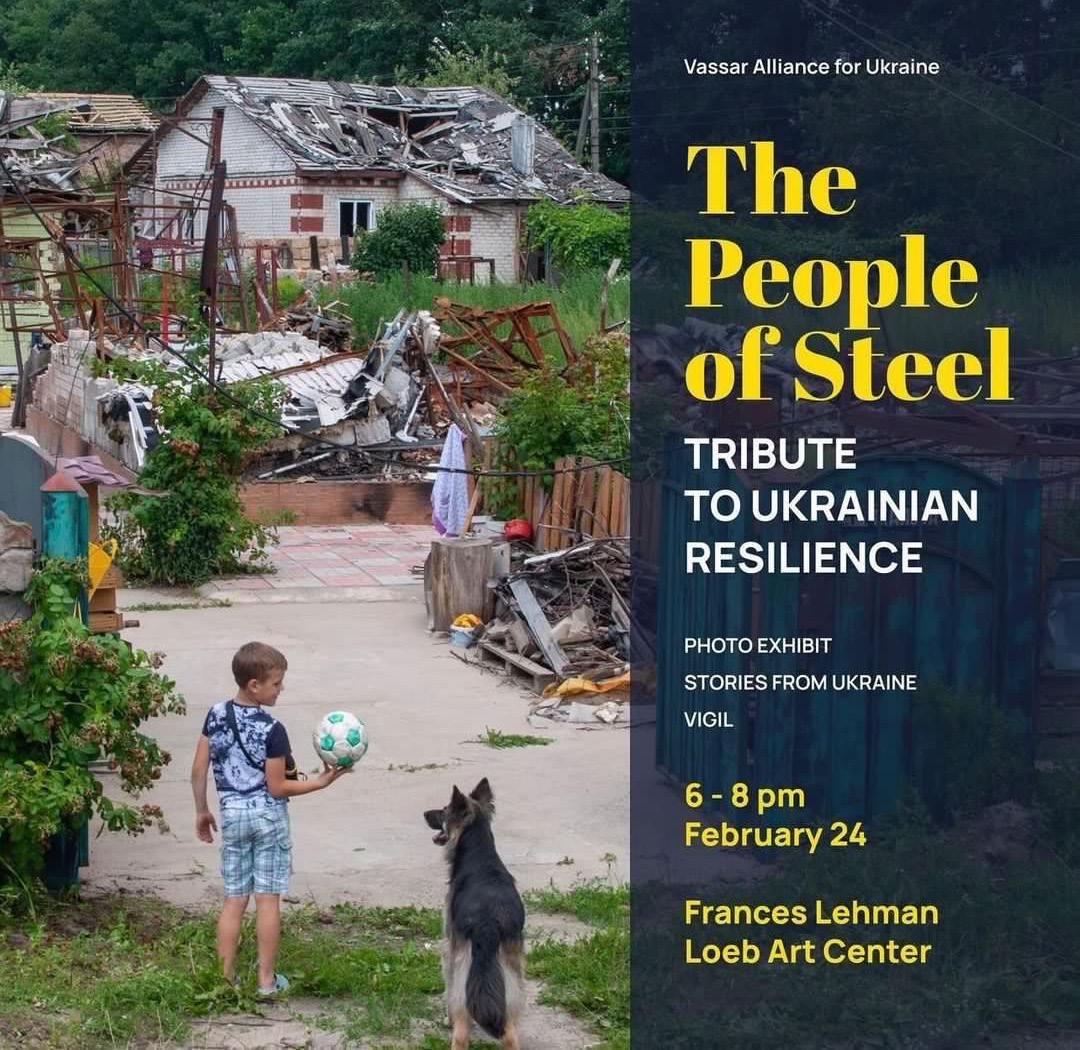
Letter to the Editor: The case for more than a history initiative
Your Feb. 15 article (“Inclusive History initiative unearths complicated legacies”) revealed months-long advocacy by the Ad Hoc Committee of Black and African American Alumnae/i of Vassar College (AHC) underlying the initiative’s launch, and led to inquiries about the AHC. The Bradley Administration’s announcement of the archivist’s two-year study (outlined in the Inclusive History initiative) of Vassar’s white supremacist history fails to acknowledge the AHC’s advocacy from May 26, 2022 to embark upon a much more comprehensive project. Moreover, it further delays reparative action, distracts from our deeper concerns and conflates the anti-Black racism of Vassar with its discrimination against other non-white groups.
Who comprises the AHC?
The AHC is comprised of almost 90 African American and Black alums of Vassar, from the classes of 1970 through 2022. All are members of AAVC (Alumnae/i Association of Vassar College) and AAAVC (African American Alumnae/i Association of Vassar College), and many have had leadership roles as Vassar students and as AAVC and local club members. The AHC includes multi-generational legacies, fund chairs, class and club officers, donors, former college trustees, a former AAVC president, past AAVC board members, former Vassar College staff and former Vassar Student Association leaders. Many of us are Black Studies (and later Africana Studies) majors and minors.
Why was the AHC created?
The AHC was created to flag and check the growing disrespectful and dismissive reactions that administrators have displayed toward Black alums' efforts to move Vassar forward. We wondered whether the administrators' effrontery could be a vestige of Vassar's abiding history of anti-Black racism. Happily, the AHC's activism has grown into more and has helped lead to the launch of the Vassar Inclusive History initiative—although there is much left for Vassar to do, and we must wait to see if Vassar’s product lives up to the initiative’s hype.
What does the AHC want?
It’s been over 50 years that self-identified Black Vassar students and alums have been challenged daily with what the Vassar ex-

perience has been (and continues to be) for them. A retrospective look at these years exposes promises made but unkept, and disturbing regression from what modest progress was achieved. And modest progress it was. The risk that students took, which led to the 1969 Main Takeover, remains a “sting” in the hearts of those who are still alive as alums and remember their Vassar experience. In this era of unleashed white supremacy, where does Vassar fit? What role will Vassar have in moving forward in the 21st century and catching up to our peer institutions? As Coretta Scott King has said, “Struggle is a never-ending process. Freedom is never really won; you earn it and win it in every generation.”
An unpaid debt remains, and the AHC has urged the College to seriously consider, dialogue and implement the following nine issues, in the best interest of Vassar College today and the future.
1. Establish and fully fund an Africana Studies Department with dedicated tenured faculty lines at the Associate Professor level and above, and fully disclose all bequests, donations and funds designated for Africana Studies.
2. Recruit, hire and retain more African American administrators, counselors and tenure track faculty, in all areas of the College, including into an Africana Studies Department.
3. Significantly increase the number of African American first-year enrollees.
4. Provide the names and contact information for all self-identified Black and African American matriculated students to the AAAVC to ensure accountability, transparency and open communication. Should any student not wish to receive communications from the AAAVC, then the student may easily opt-out.
5. Grant the Co-Chairs of the AAAVC voting and all other rights as full AAVC Board members, without diminishing the membership of other AAVC Board members who identify as Black or African American.
6. Comprehensively research, document, publish and commemorate the contributions of Black people from the African
Diaspora to the building of the academic, artistic, cultural, social and community life of Vassar College.
7. Adopt a comprehensive statement acknowledging Vassar’s anti-Black history and support of segregation, and unequivocally declare that Vassar will not tolerate anti-Black racism and white supremacist ideology on its campus in any form, including under the guise of academic freedom and expression.
8. Require all students, faculty, administrators and staff to abide by Vassar’s statement renouncing anti-Black racism and white supremacist ideology and make attendance at elimination of bias educational programming mandatory.
9. Develop and implement an ongoing Collective Racial Healing, Truth and Reconciliation Program that includes an opportunity for current students, alumnae/i, faculty and administrators to safely share their experiences of anti-Black racism on campus and beyond; mediation and counseling; meaningful acknowledgment; grief and trauma healing; and amends.
As we looked at the wide array of Vassar’s peer institutions, we noted that many Africana Studies curricula were granted Department status immediately or over time. Even now, peer colleges and universities are creating departments or transitioning to departments. We could not understand why the Vassar administration drew a line in the sand, denying our students/scholars a full department. We wondered if they knew that they were even more firmly adhering to an historic practice of institutional racism. And so we concluded it would be best to provide the Vassar community with what we entitled “A Brief History of Anti-Black Racism at Vassar.” (Go to http://bit.ly/3Z5N4dJ) This brief but illustrative document contextualizes Vassar’s refusal to transition the Africana Studies program to a department, Vassar’s limit of 1.5 Africana Studies faculty slots and having those slots devoted solely to carceral studies, and the disdain that the President, Board Chair and Dean of the Faculty have displayed to the AHC.
The Dean of the Faculty utters the canard that in advocating for an Africana Studies Department, the AHC is disregarding the
faculty prerogative of designing academic areas of study and their curricula. What we did was ask the Africana Studies faculty for an audience with them to engage in an open exchange. The Dean intervened and blocked it. What is our liberal arts college if not a place where such dialog about advancing learning is welcomed? Peer and preeminent institutions have found great value in establishing Departments of Africana Studies or elevating their programs to Department status. Vassar deserves an inquiry to discover why. Vassar’s claim that it has spoken to some of our program faculty and the faculty don’t want a department, is a natural answer to a pretextual question, “Do you want a department?” Current faculty have their own home departments and don’t need another department. We have no quarrel with that. The real question should have been: “Would you feel any impediment to teaching your course if it were cross-listed in a department rather than in a program?” Regardless, asking the right question does not undermine Vassar’s governance.
We have spent countless hours over almost nine months communicating concerns about entrenched systemic anti-Black racism at Vassar in email exchanges with the President, Board of Trustees, AAVC, Faculty Dean and FPCC (Faculty Policy and Conference Committee), with copies to leaders of Black student organizations, the only students we could access by email. We urged Vassar to remove barriers it has newly erected to AAAVC’s ability to contact current students and recent alums. (https:// bit.ly/AHCofVC2a) If the AHC did not comprise many members who have demonstrated their commitment to making Vassar better, this relatively fruitless pursuit would have been abandoned in frustration months ago. We will not abandon our commitment to “Vassar for a lifetime.”
The AHC began these exchanges respectfully, intentionally and with hope that introspection and recognition of inherent bias would prevail among Vassar leadership. Instead, we were met with closed minds, defensiveness and denial, leaving us no choice but to speak publicly.
Formula 1 returns for the 2023 season: A primer
Amber Huang Guest ColumnistThe 2023 Formula 1 season starts at the end of the month with preseason testing and the first race in Bahrain. The sport, which has long been popular in Europe and countries abroad, has recently experienced a meteoric rise in TV ratings in the United States, according to ESPN Press Room. While Netflix’s “Drive to Survive” doesn’t always accurately depict the events of each race weekend, it’s had no small part in this increase in viewership—Season Five of “DtS” premieres Feb. 24.
If you’re tuning into F1 for the first time, here’s a quick primer on what to expect this season:
How does a race weekend work?
Race weekends usually span from Friday to Sunday. During most races, there are three practice sessions, a qualifying session and the actual race. Practice sessions allow teams to adjust their car setups and see how the car runs on the track, while qualifying sets the starting order for the race. On Friday, there are two practice sessions, Saturday has one final practice session before qualifying, and the actual race is held on Sunday.
Qualifying, which sets the stage for the race, has three parts: In Q1 (the “Q” stands for “qualifying”), all 20 drivers have 18 minutes to set the fastest time they can. When Q1 ends, the five slowest drivers are eliminated, and the 15 remaining drivers move to Q2, where they have 15 minutes to set a time. The top 10 drivers get to move on to Q3, where they have 12 minutes to battle for the top starting position, called the pole position. The starting grid, or the order in which cars start, is determined by drivers’ positions from the qualifying rounds.
Racing is not just about how fast you go,
but it’s also about strategy. There are three different types of tires available for each race—a hard tire that lasts long but isn’t as fast, a soft compound that’s fast but not long-lasting and a medium one in between—and cars are required to use two of the three compounds during the race. This means cars must make at least one pitstop to change tires, and the timing of the pitstop can make or break a race. Races are about two hours long, so you might see everyone pitting at the same time or some more adventurous strategies. Drivers in the top 10 score points based on their finishing place, and these points contribute to individual and team standings.
Crashes do happen in F1, and they run from someone spinning off the track and into barriers to terrifying, fiery disasters. Minor crashes will trigger a yellow flag, which tells drivers to slow down, or a safety car, which drivers must follow until dangers on the track are cleared. Major accidents will trigger a red flag, which pauses the race. F1 has not had a fatal accident since 2015, The New York Times reports, and the sport continues to implement safety features in cars to prevent another death.
How many races are there in a season?
This season, there are 22 races. While the number of races has gone up over the past few years, there are (rightful) concerns about work burdens for F1 team staff and climate concerns from all of the traveling. F1 hops all around the world, starting in Bahrain and visiting circuits all over Europe, Asia and the Americas. If you’re looking for Eastern Time-friendly races, there are three races in the United States (Circuit of the Americas, Vegas and Miami) and one each in Mexico, Canada and Brazil.
What cars are they driving?
F1 cars are single-seater, open wheel cars with a mid-engine setup (where the engine is behind the driver instead of in front, like in most road cars). Current F1 cars have a turbocharged hybrid V6 engine that makes around 1000 horsepower, as per PlanetF1. Cars must follow a set of common regulations that involve elements including the engine, tires, safety requirements and more. Within these regulations, however, teams are free to design their cars however they want to maximize power and aerodynamics, leading to engineering battles between teams.
Who are the teams?
There are ten teams currently in F1: Mercedes, Alpine, Haas, McLaren, Red Bull Racing, Aston Martin, AlphaTauri, Ferrari, Alfa Romeo and Williams. Each team has a team principal who plays the part of a General Manager, a wide variety of engineers and staff, and two drivers. Some teams (Mercedes, Alpine, Red Bull, Ferrari) provide engines to other teams. You might hear carmakers such as Honda and Ford mentioned in conversation about engine manufacturers: Honda previously manufactured engines for Red Bull and AlphaTauri, and Red Bull recently announced Ford as their engine source starting in 2026.
Who are the drivers?
Each team has two drivers. This year’s drivers are listed below:
Mercedes: Lewis Hamilton and George Russell
• Alpine: Esteban Ocon and Pierre
Gasly
Haas: Kevin Magnussen and Nico
Hulkenberg
McLaren: Lando Norris and Oscar Piastri
• Red Bull: Max Verstappen and Sergio
Perez Aston Martin: Fernando Alonso and Lance Stroll
• AlphaTauri: Yuki Tsunoda and Nyck
De Vries
Ferrari: Charles Leclerc and Carlos Sainz
Alfa Romeo: Valtteri Bottas and Zhou
Guanyu
• Williams: Alex Albon and Logan
Sargeant
While F1 is a team sport, it’s also an individual sport. Drivers compete with their teammates for places and points, and it can get messy. F1 is a dog eat dog world, and everyone’s trying to be the bigger pup.
Let’s be honest, who’s good?
There are three big teams: Mercedes, Red Bull and Ferrari. Red Bull, with Verstappen, is the reigning champion, but Mercedes has dominated the current engine era until recent regulation changes last season. Hamilton, Mercedes’ driver, has won seven F1 championships (tied for most) and is on the hunt for an eighth. Leclerc is thirsting for his own championship with Ferrari but was plagued with a multitude of strategical and reliability issues. lonso won two championships in the 2000s, per Formula 1, and although the Aston Martin isn’t the best car, he’s one to watch out for along with Norris in the McLaren.
It’s lights out, and away we go!
The first F1 race of the season is March 3 through 5 in Bahrain, and if you’re interested in watching, you can find broadcast times on the F1 website. Watching races in Europe and Asia usually results in an early Sunday morning here on the East Coast, but in my opinion, it’s worth it. Now that you know a bit about F1, get out there, pick someone to root for and get ready for weekends of thrilling races!
Track and field looks forward to first indoor championships
Continued from Track on page 1
Reed explained, “We may have been one of only a handful of schools in the country and certainly the only one in the Northeast, with just outdoor [track].”
This weekend, the team will compete in its first Liberty League Indoor Championships in program history.
“Having an indoor season means that we come into the spring with a momentum we didn’t have before,” explained Jeremy Frank ’25 via email. By not having an indoor season, the team was arriving to outdoor competitions at a disadvantage that no amount of practice could eliminate. Even if outdoor track is an athlete’s focus, the competition experience that the indoor season allows is essential to preparing for the outdoor season.
Seasons should not be shortened because of weather conditions. Outdoor sports like soccer strategically play in the months where they know a full season can run its course without the weather being a factor. Now, track gets to do the same.
As Reed put it, “I believe it also gives our athletes the full collegiate experience of the sport.”
This indoor season, the women’s and men’s team have each competed in five meets.
“I was apprehensive about indoor at first, to be honest, but it feels like a bonus, maybe making up for some of the competition we missed during the pandemic,” captain Augusta Stockman ’23 said via email. “Racing so frequently has taken some of the pressure off, too, and I feel like I’ve been able to have a lot of fun with it.”
Both sides' best finish came at the Blue and Orange Invite hosted by Utica College on Jan. 27 and 28, when the women’s team captured the first indoor meet win in program history and the men’s team finished sixth, per Vassar Athletics.
For the women’s team, Traci Francis ’25 won the 60-meter dash and was joined by Ava Novak ’25, who finished fourth, among the top finishers.
The group was also successful in distance events as Stockman continued her cross country success by winning the mile run. Stockman was also accompanied by a teammate at the top of the field as Noni Pattington ’25 finished fifth overall.
Francis and Stockman’s times were both All-Atlantic Region Conference marks, qualifying them for the exclusive regional championships at the Armory track in New York City on March 3 and 4.
The women’s team was also victorious in the distance medley relay race as Clara Wiesler ’24, Nora Goldberg-Courtney ’26, Stockman and Pattington collaborated for the victory. Lila Miller ’26 won the shot put.
In the 60-meter hurdles, Vassar was well represented as Catherine Peacock ’26 finished second overall in the event, followed by Nora Jensen ’24 and Elinor Kops ’25 who finished in third and fourth place, respectively.
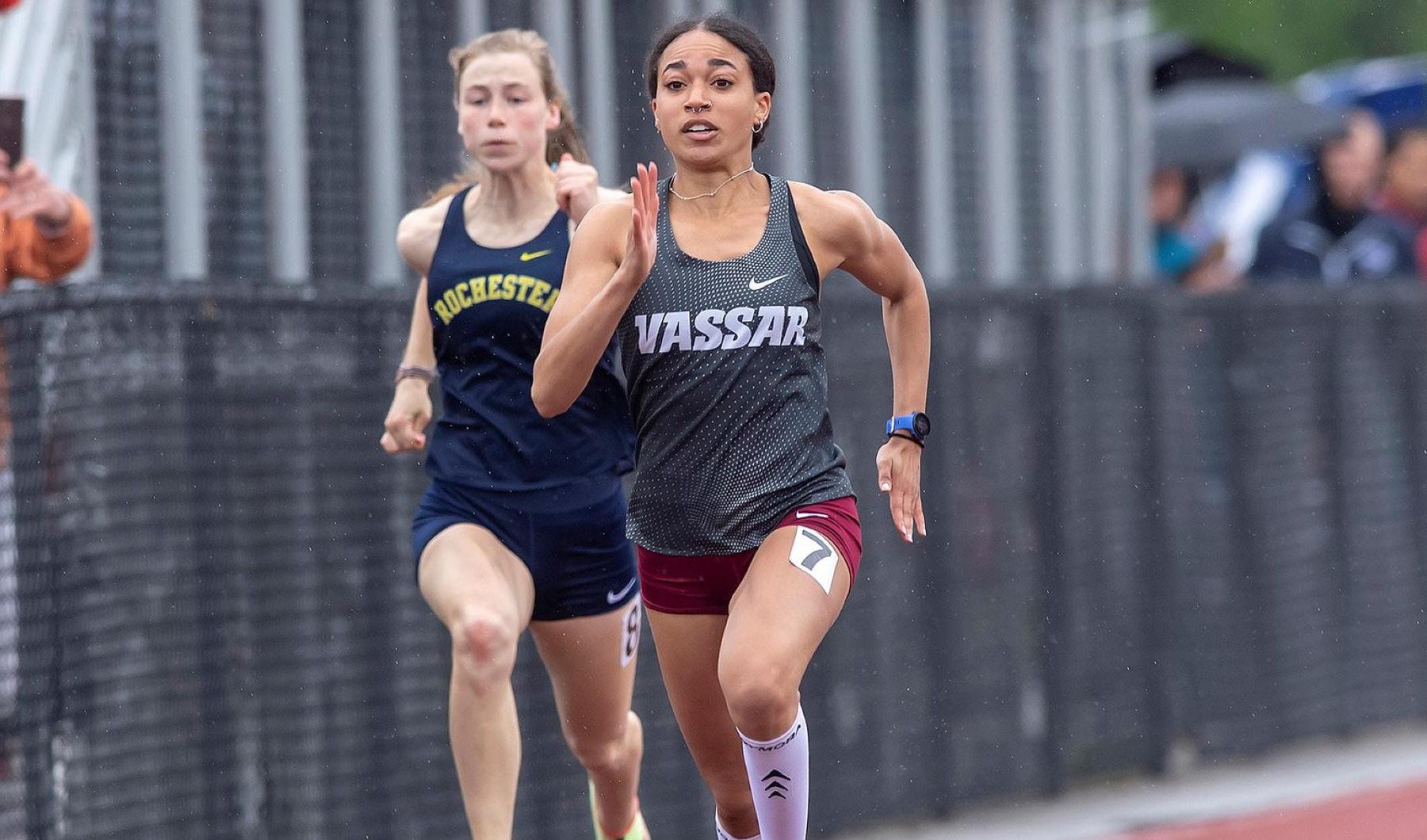
In the pentathlon, Faye Stevens ’25 took second place overall and won the 800-meter race which is a part of the five event competition.
On the men’s side, Jose Magana ’25 was Vassar’s top finisher in the 3000-meter race and Darnell Worley ’24 finished second in the
60-meter dash. Relays were also a strength as Tucker Quinlan ’23, Tim Jacques ’25, Sam Lytel ’24 and Worley finished second in the 4x200. And in the distance medley relay, Simon LaClair ’24, Tim Buchan ’25, Nick Redstone ’25 and Magana finished third.
In the field events, Frank finished second overall in the men’s pole vault and Justin White ’26 finished ninth overall in the shot put.
With the strong results at the Blue and Orange Invite in mind, Reed is optimistic about how the winter has gone heading into the postseason.
“I think the season has gone well so far,” he wrote when asked about how he feels his team has fared. “People have been competing really well.”
Stockman acknowledged that while the addition of an indoor season was certainly
eagerly welcomed, there were still adjustments that needed to be made—adjustments that can take time.
“For returners it has been an adjustment for sure, and I think for first-years it is maybe a bit unsettling that the whole team is on this learning curve— as a senior I’d like to be able to give advice and speak to past experience, but I didn’t even run indoor in high school so I’d literally never raced on a 200m track before,” she explained.
Overall, Reed enters this weekend’s championships with an optimistic outlook.
“I think the team is really looking forward to our postseason, the conference championships and regional championships,” he said. “We also have a few athletes we believe have the ability to make the NCAA championships, and that would be very exciting for our program.”
The Miscellany Crossword
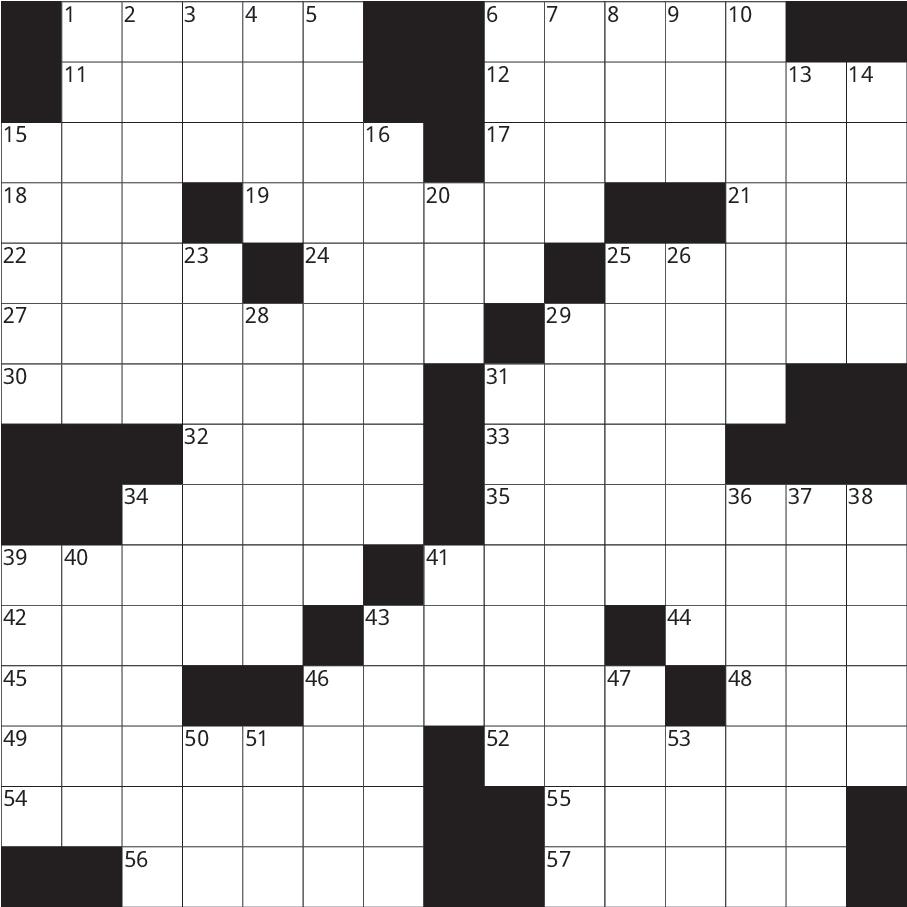

"Willpower and Wordplay"
By Sadie KeesburyACROSS
1. Appropriate rhyme for snips
6. Show a feeling
11. Blood pumping organ
12. Purplish-pink, or Riff-Raff's counterpart in “Rocky Horror Picture Show”
15. Those who violate the 10 commandments, e.g.
17. Rainwater container
18. Letters before a British ship name
19. Touched lightly
21. “Awe, _____”
22. Cusco was the capital of this empire
24. Thin metal string
25. Act in accordance (with)
27. Possibly
29. Blends up
30. Compose some letters?
31. “World of Warcraft” spellcasters
32. However, Ital.
33. Water, Sp.
34. Serious in manner
35. Say again
39. A little messy, as a dorm room might be
41. Vassar and McConaughey, for two
42. Tattletales
43. Baby hosp. wing
44. Greek God of love
45. “_____ had enough!”
46. _____-_____ Nouveau (rebirth of the Modern Style)
48. Mining find
49. Source of a skincare essential oil
52. Catches
54. _____ Park (New Jersey or Chicago Suburb)
55. John of “Tiny Dancer”
56. Bono who was once married to Cher
Answers to last week’s puzzle: "A Game Where..."
By Julia Barnett57. Instagram's TikTok dupe
DOWN
1. Smoke exhaler
2. Camera protector
3. Actor McKellen of “Lord of the Rings”
4. Get ready (for), for short
5. Red fruit
6. Event hype-person
7. Housekeeper
8. First ones, abbr.
9. Vietnamese Spring holiday
10. NOT friends
13. Barter
14. Hathaway and Of Green Gables, for two
15. Switch from drive to reverse
16. Geronimo ______ (Mouse detective)
20. Attempt
23. Not contaminated
25. Month before September
26. Inhale or exhale
28. They might grow an Apple tree?
29. Piano player’s assistant
31. Shaken instruments
34. Smaller rivers
36. Kind of hairspray
37. What Mr. Swanson and Mr. Weasley constitute?
38. German city in the Ruhr Valley
39. Come together
40. Belly button
41. Drink flavoring brand
43. Full of requests
46. Bright (as a color)
47. Story that might be tall
50. One more than one
51. What Mr. Weasley or Mr. Swanson alone might constitute?
53. Co. that merged into Verizon
